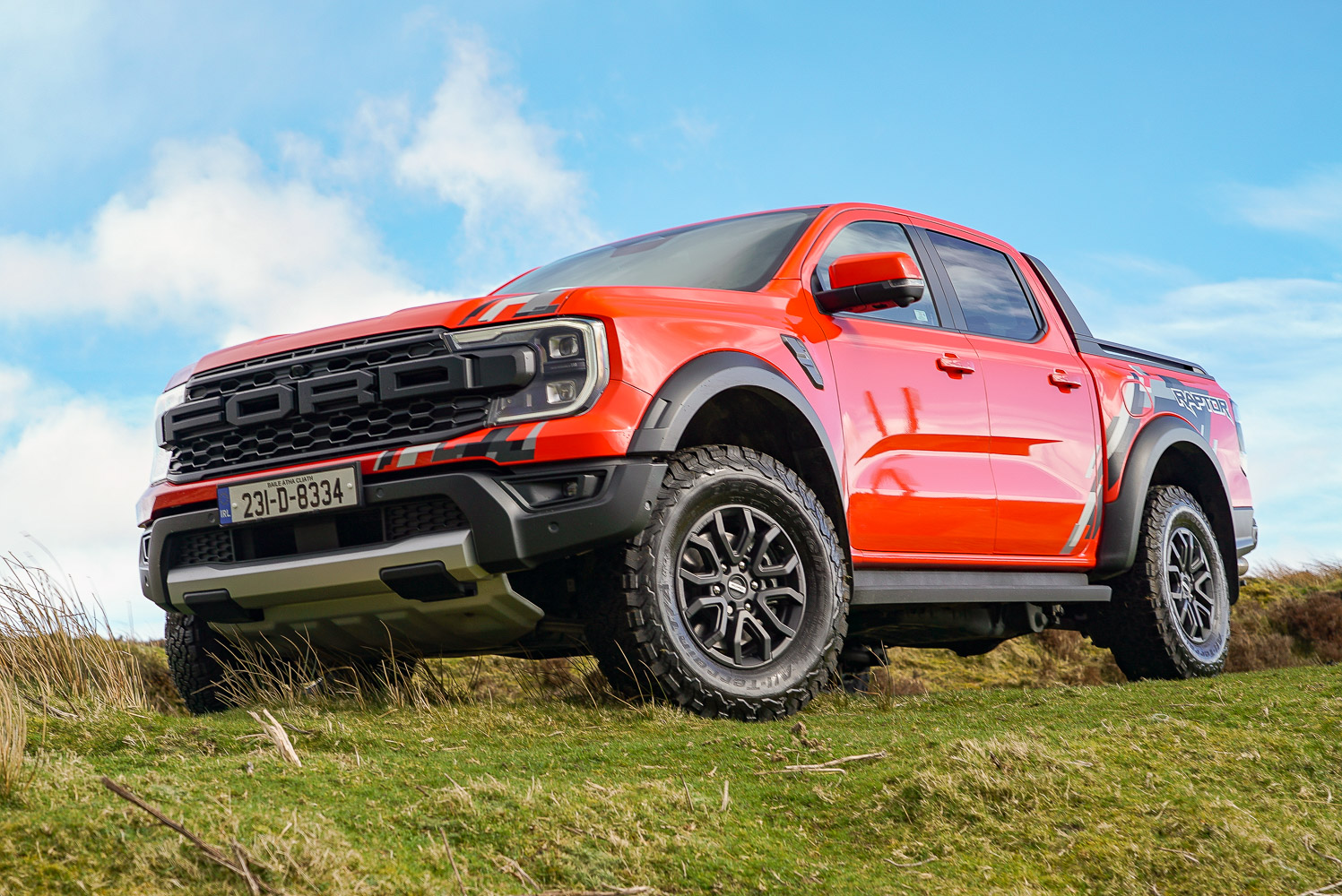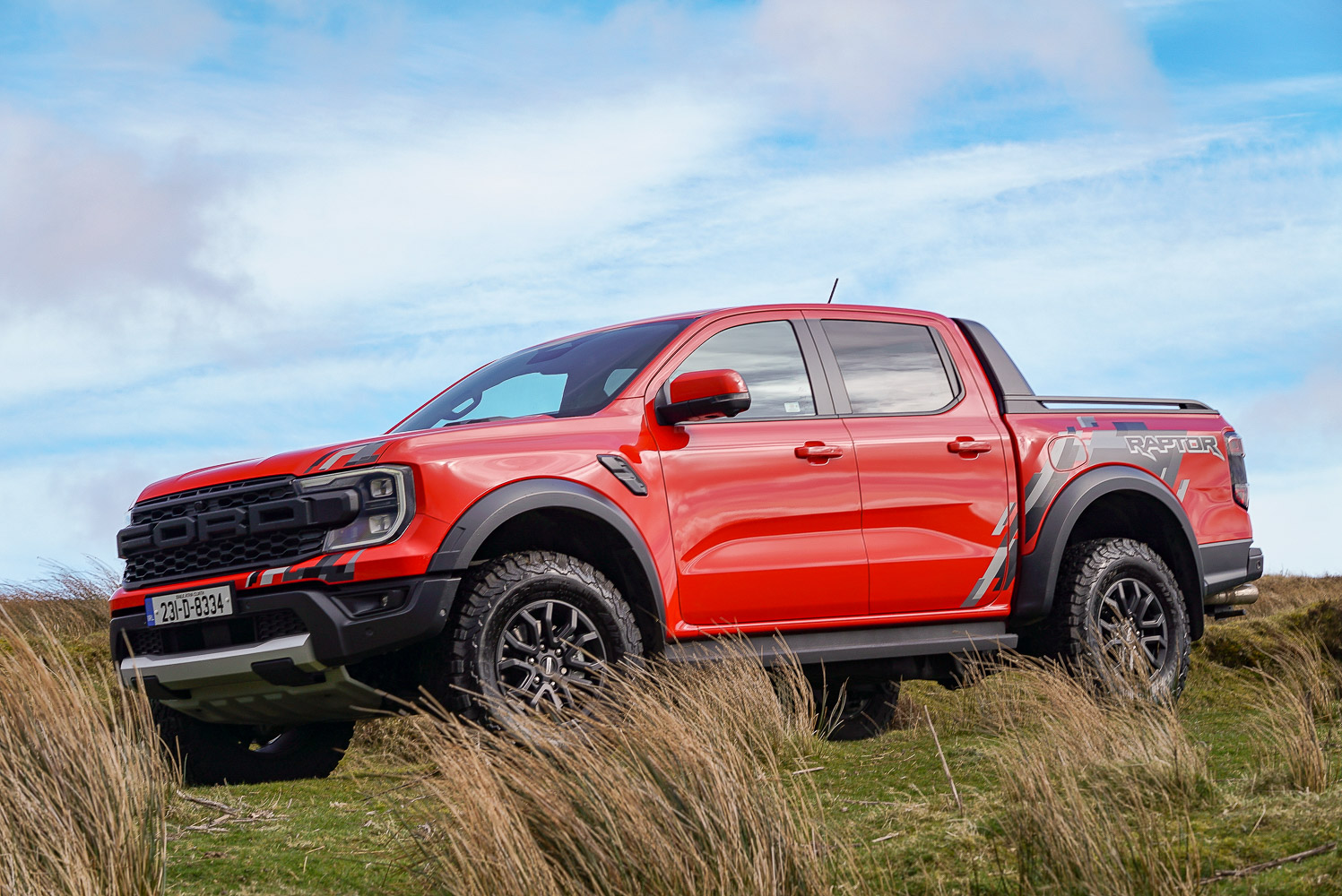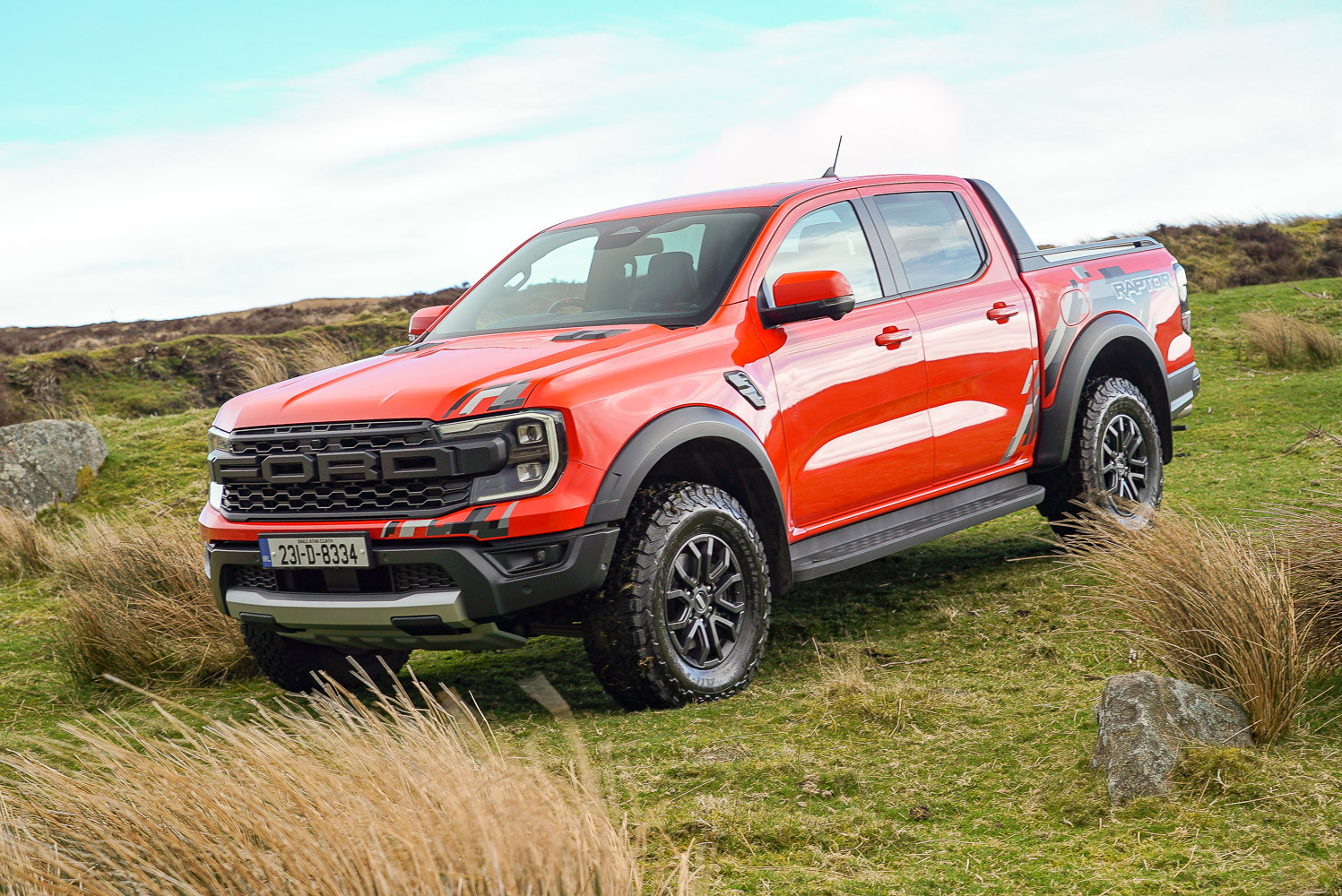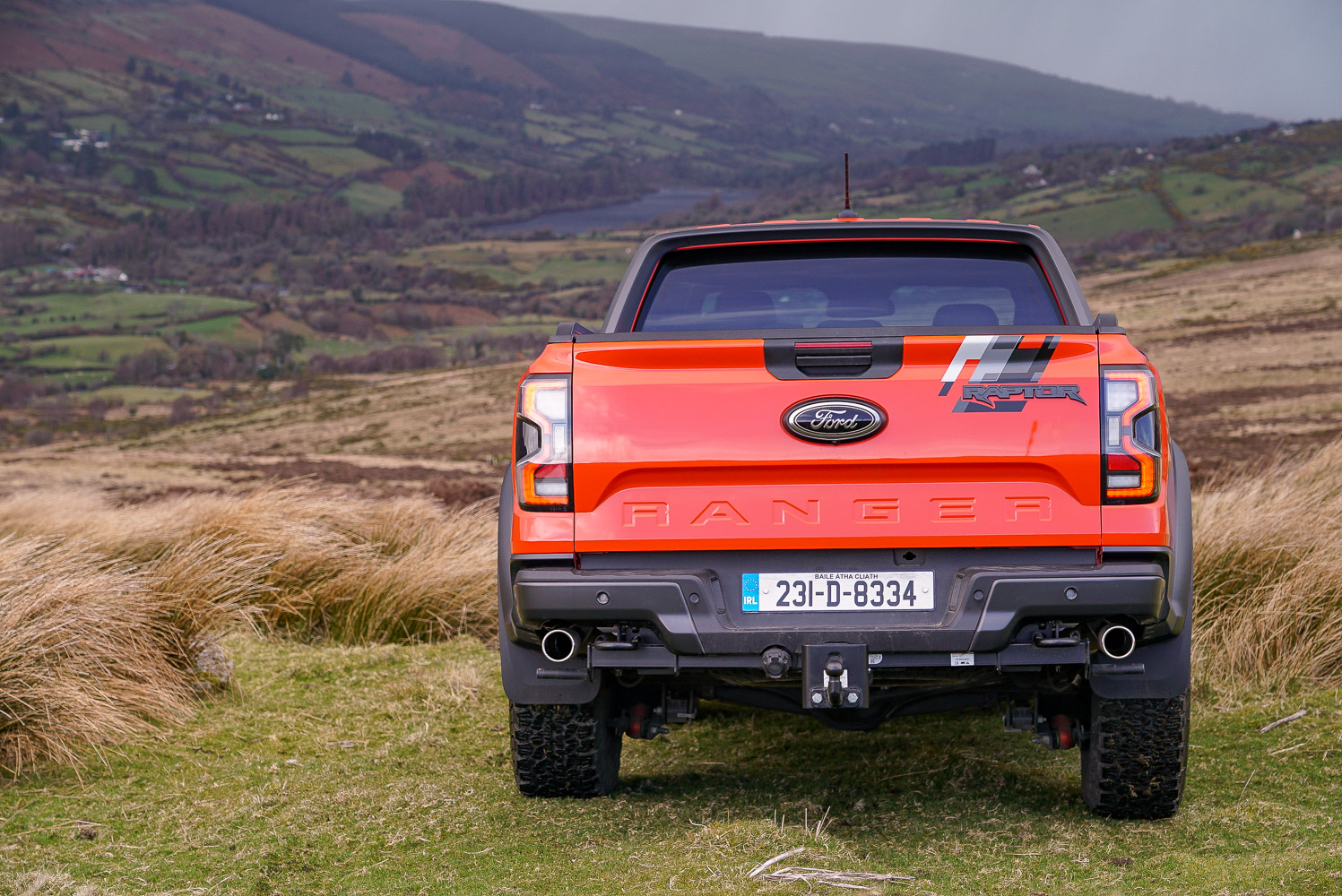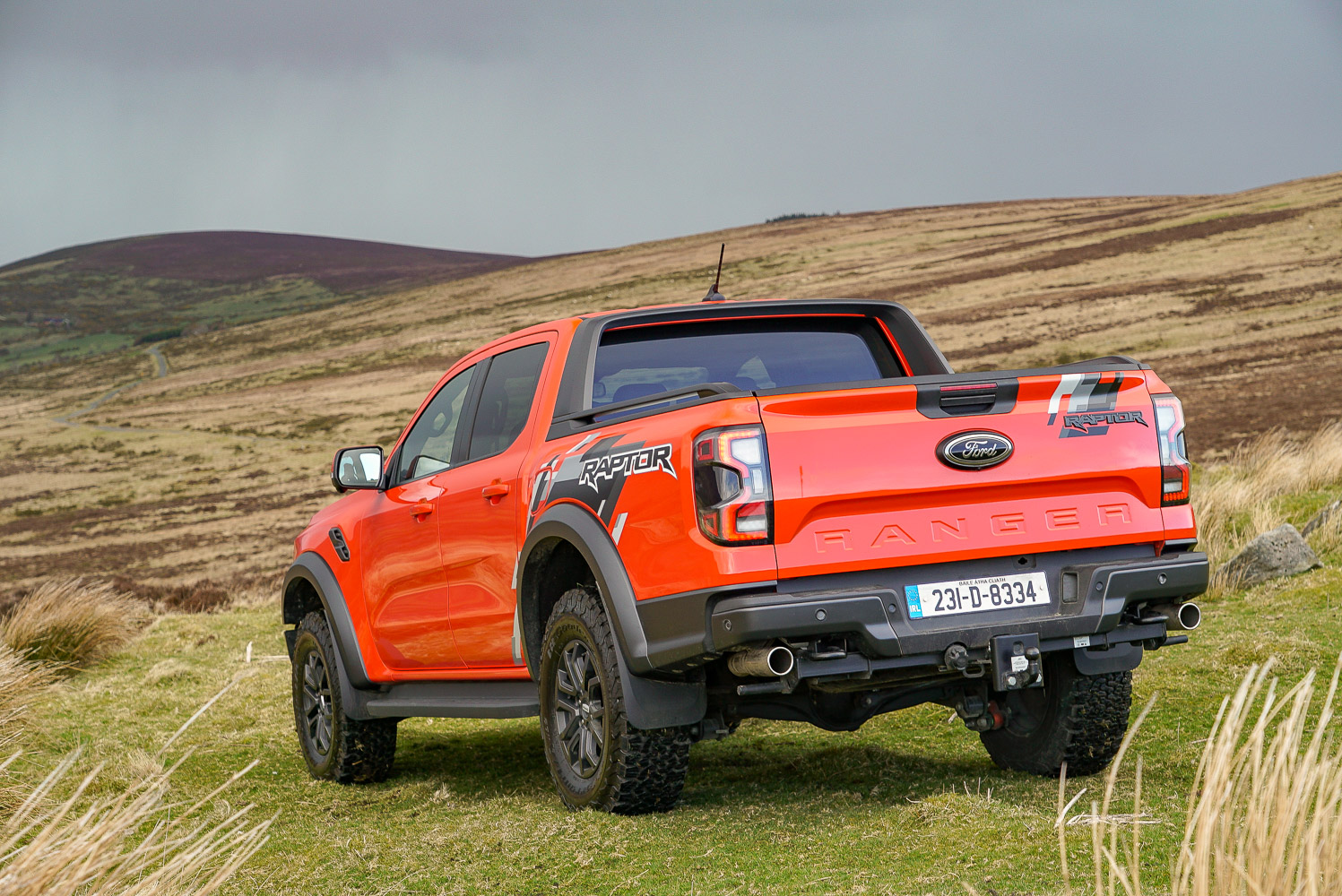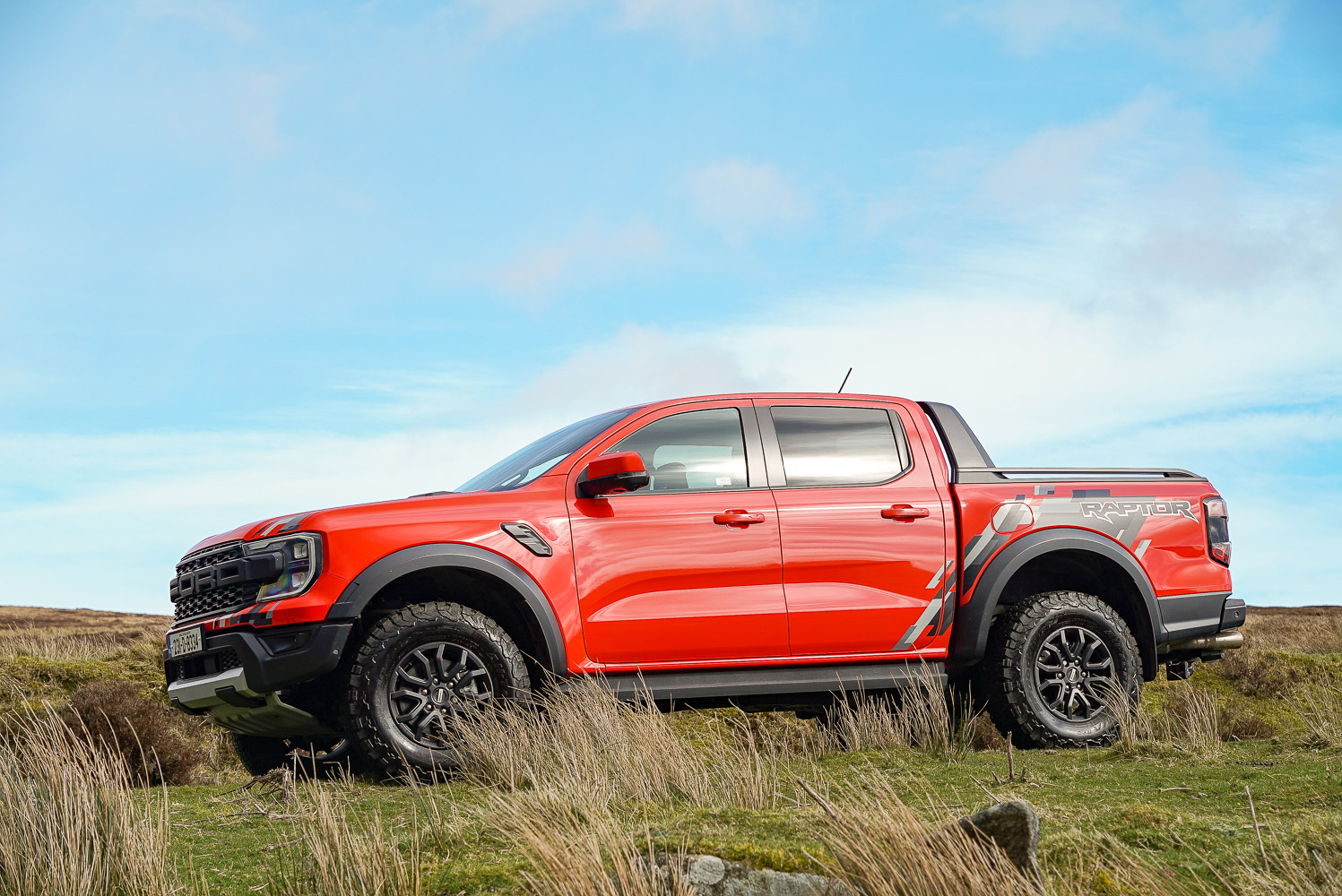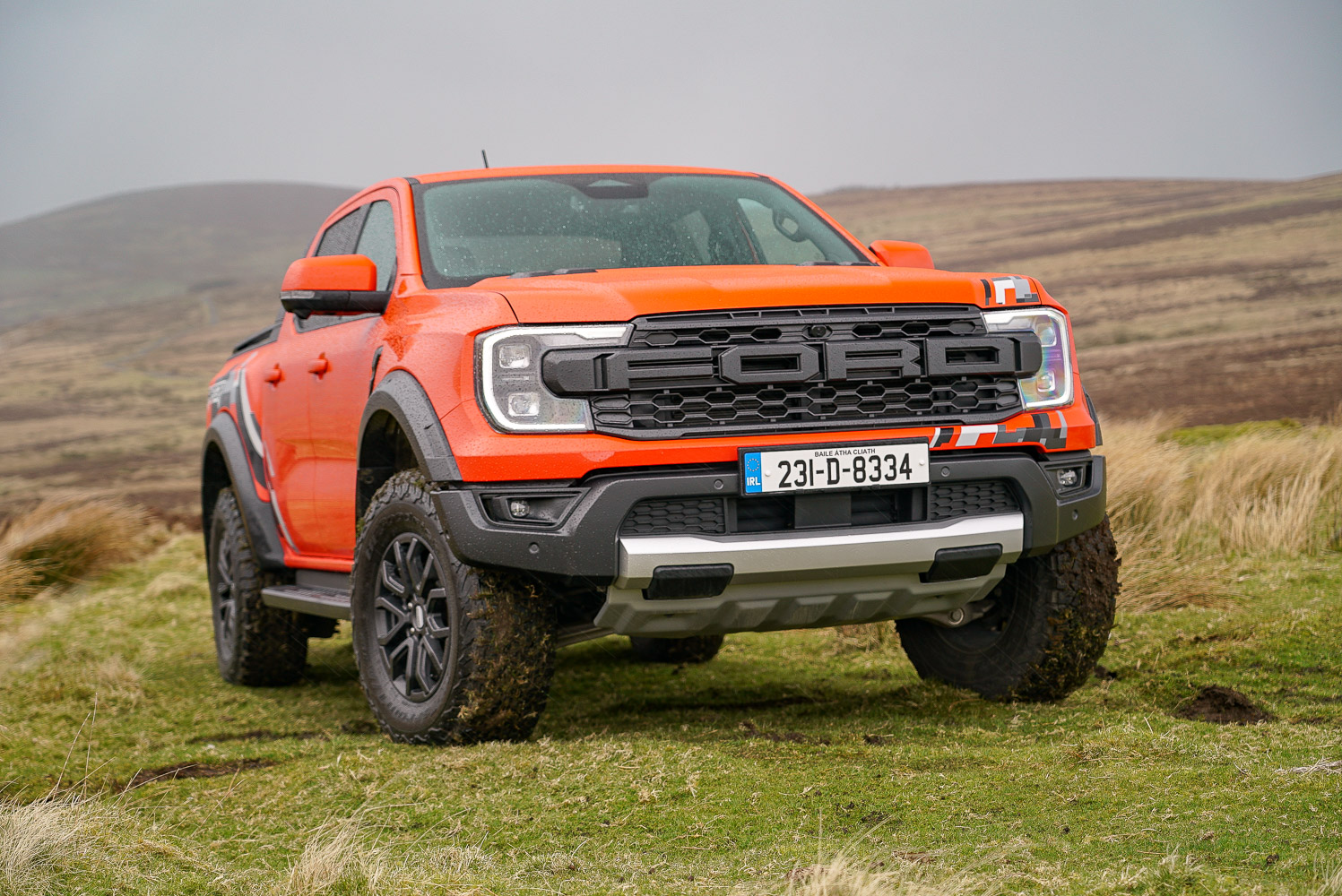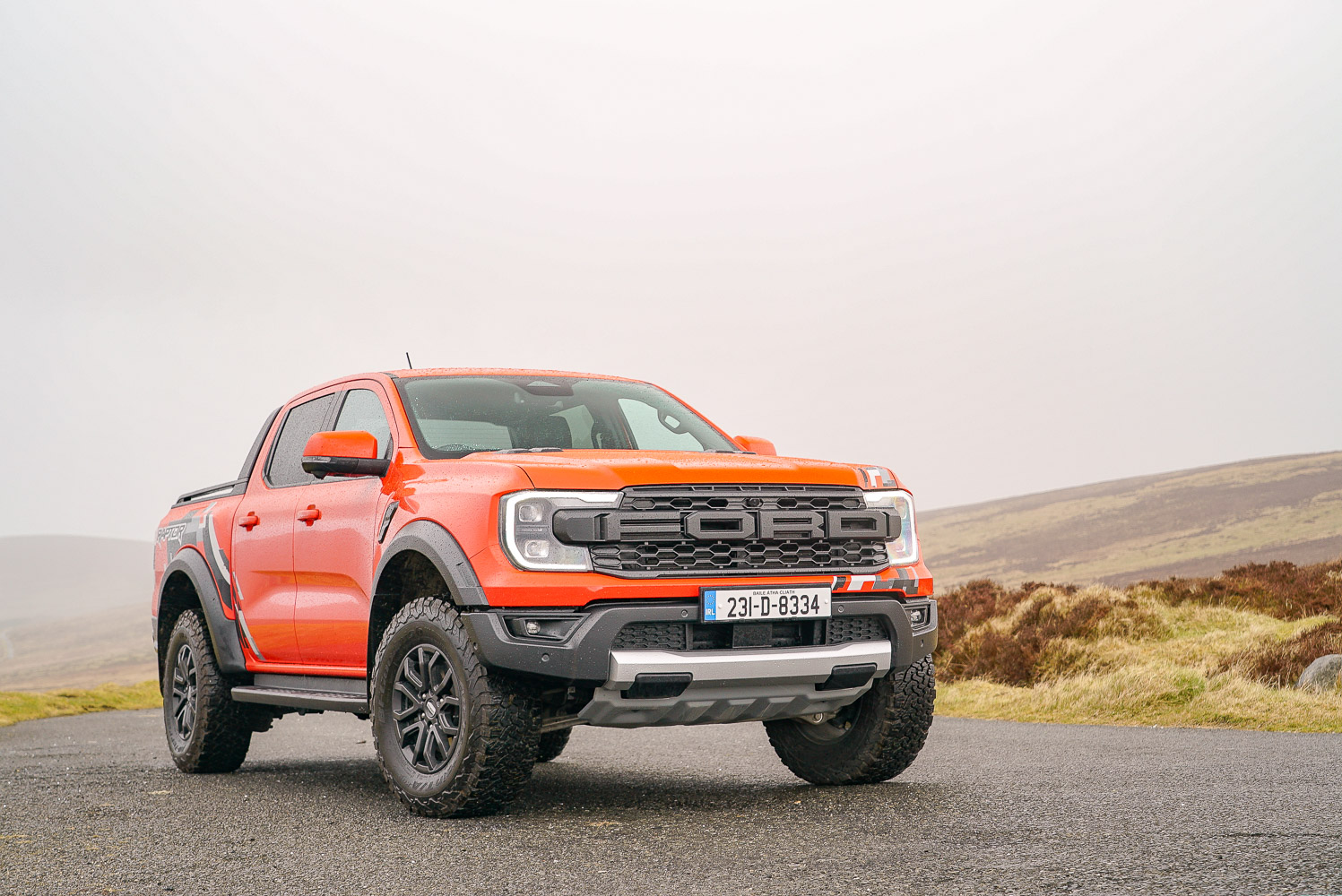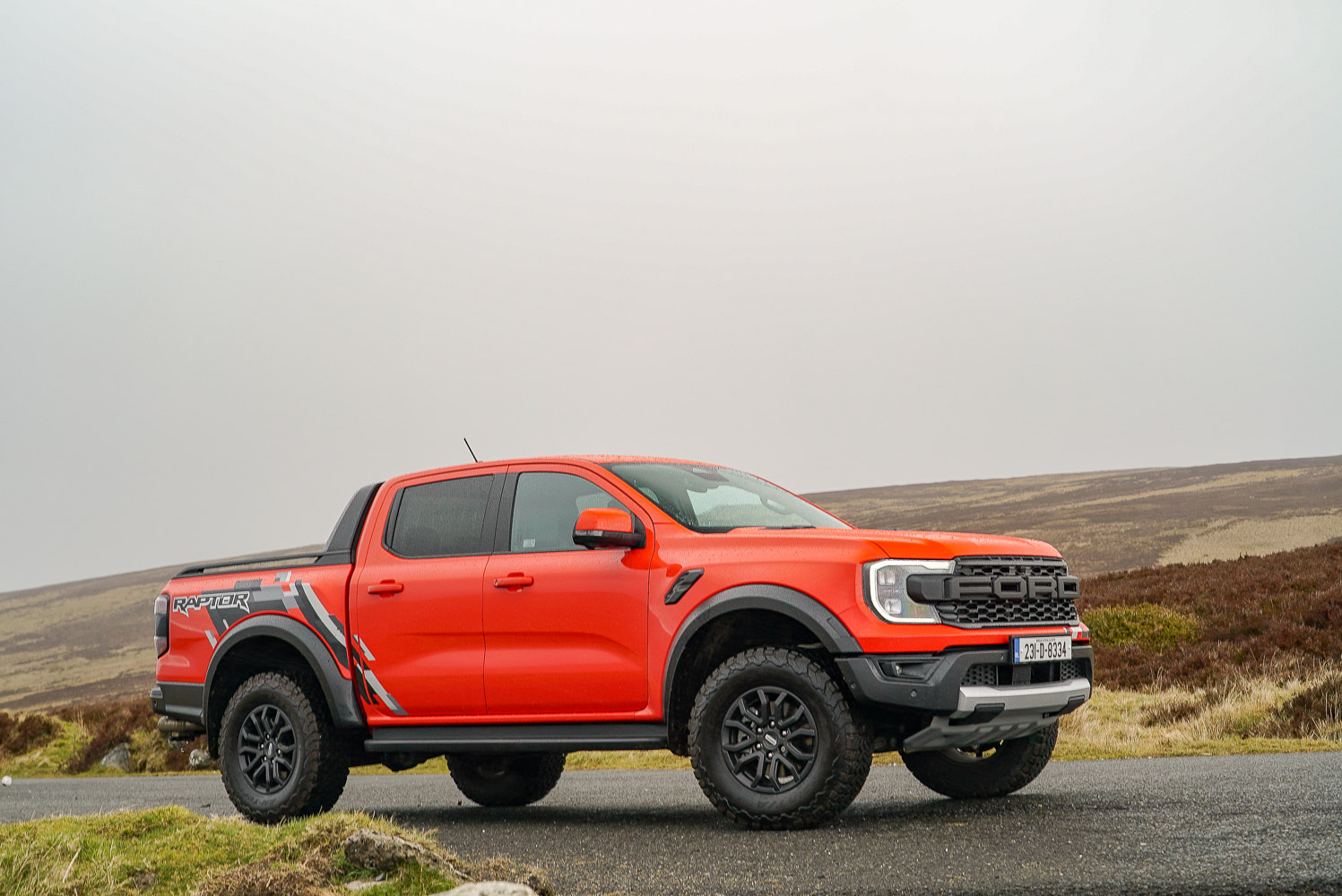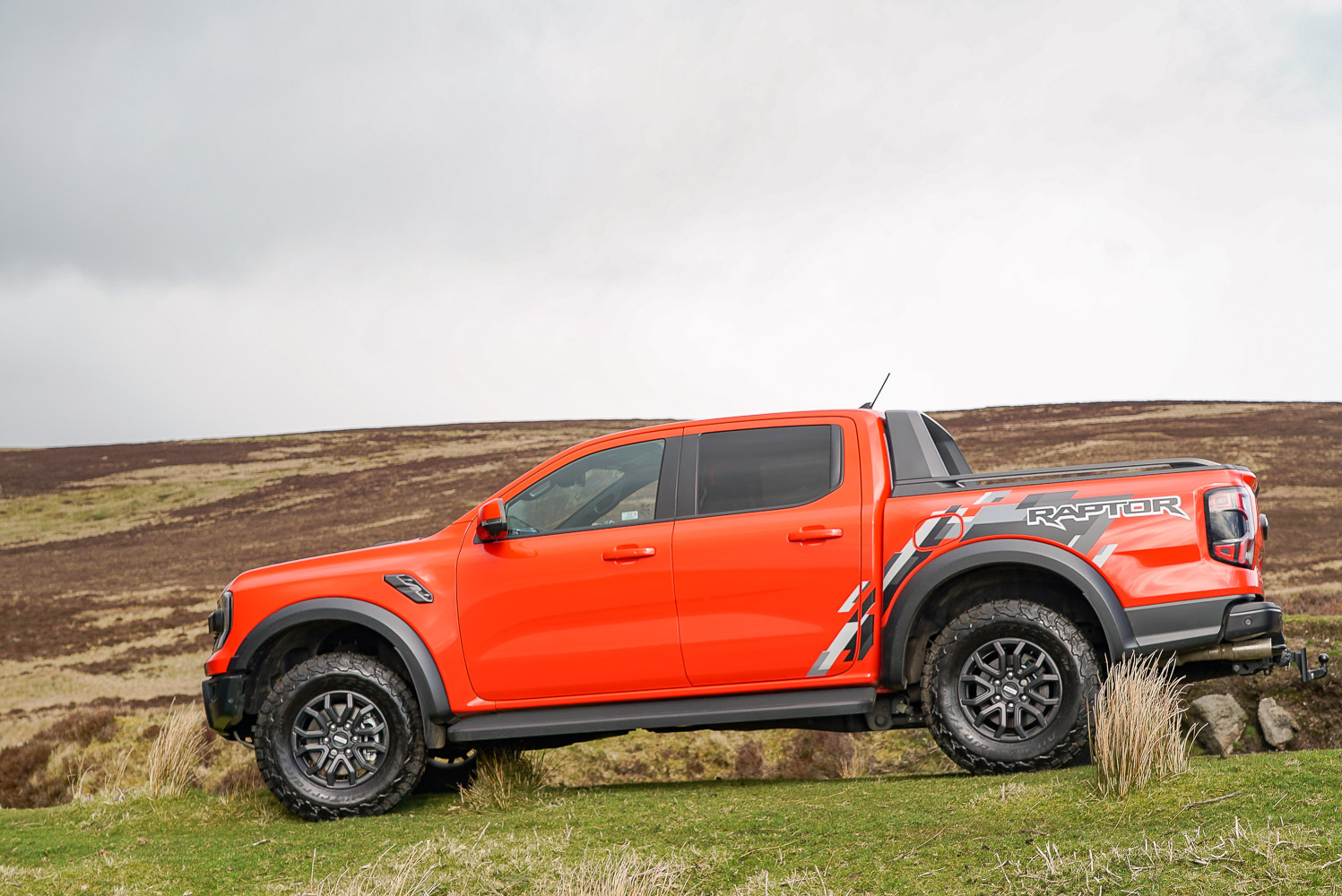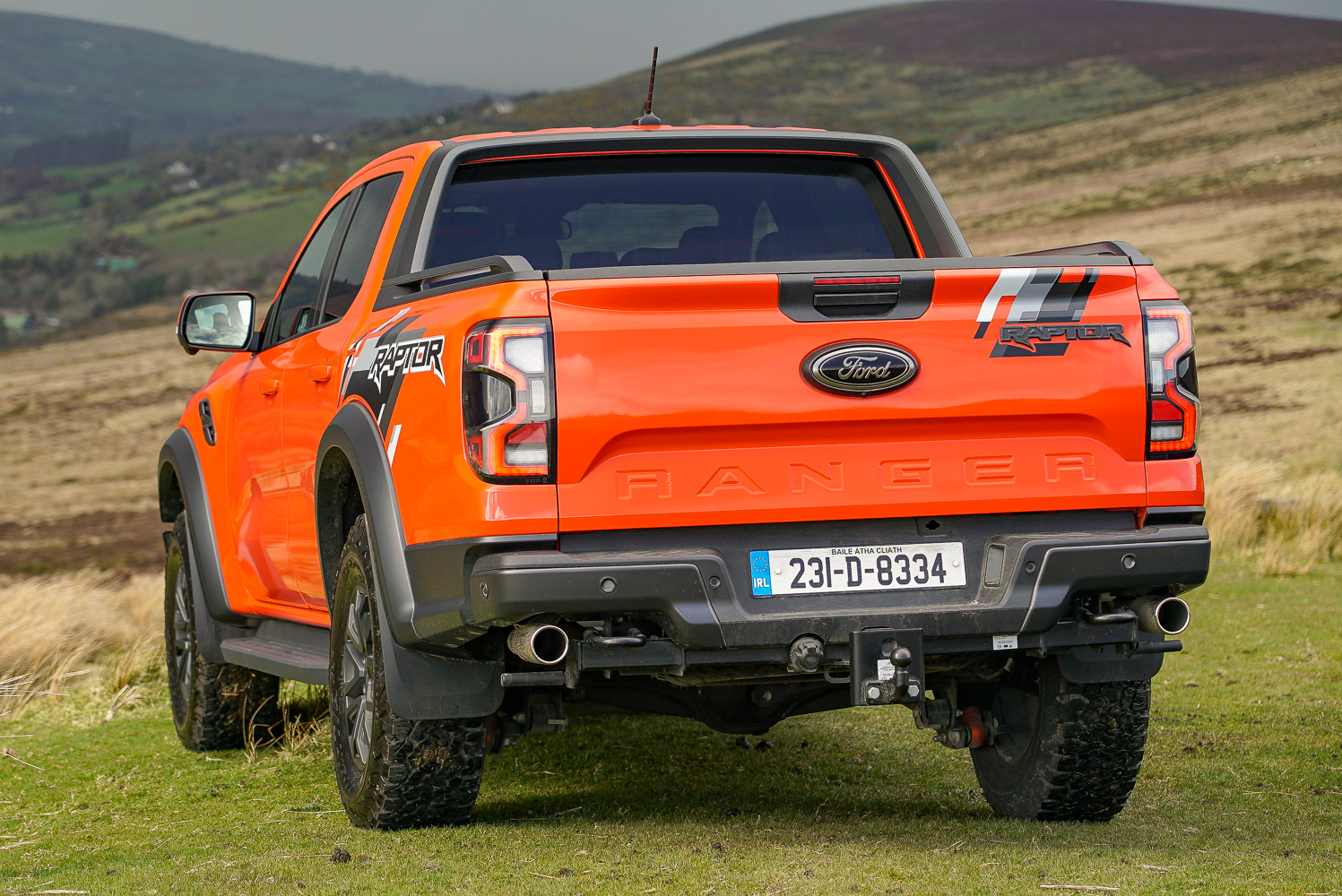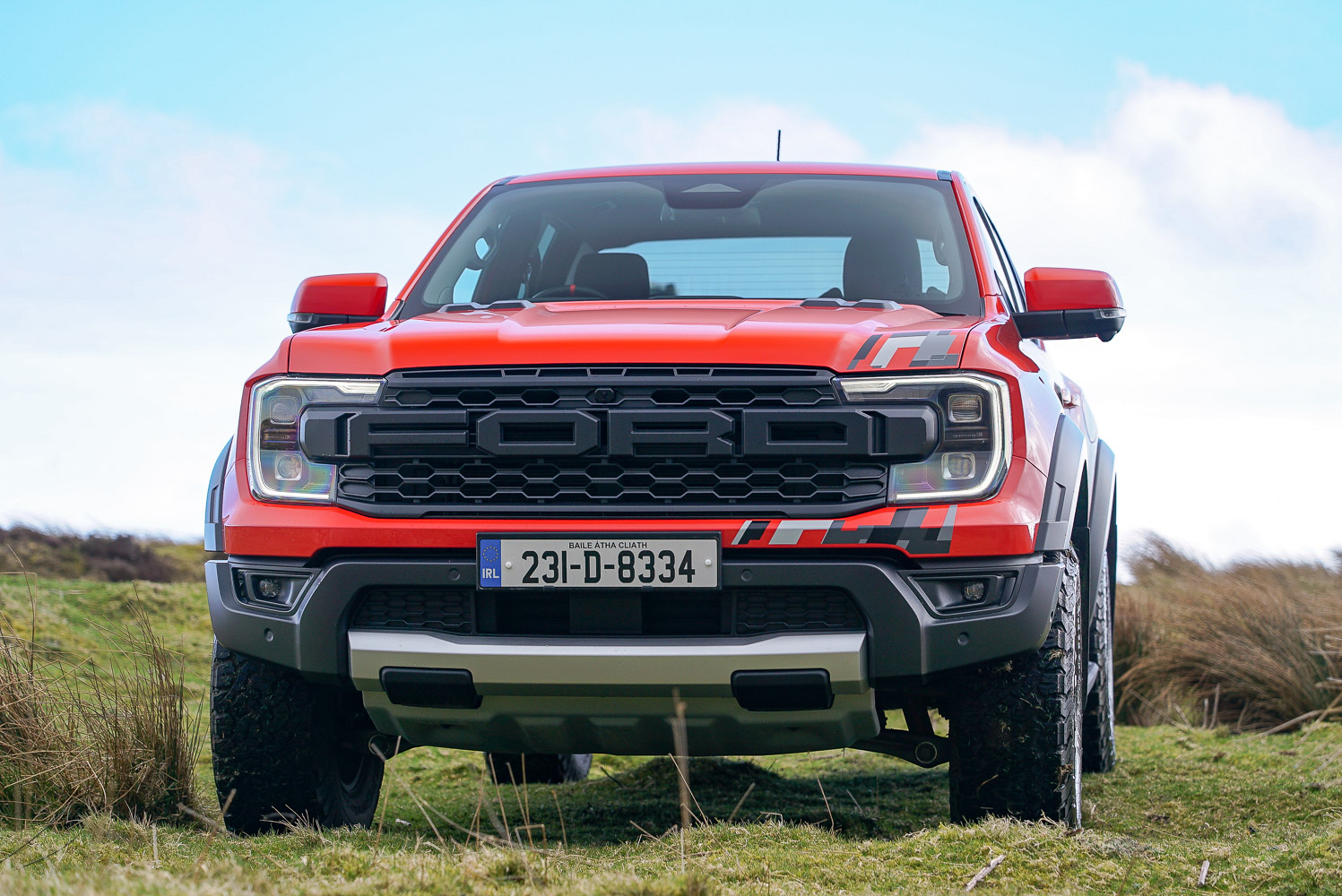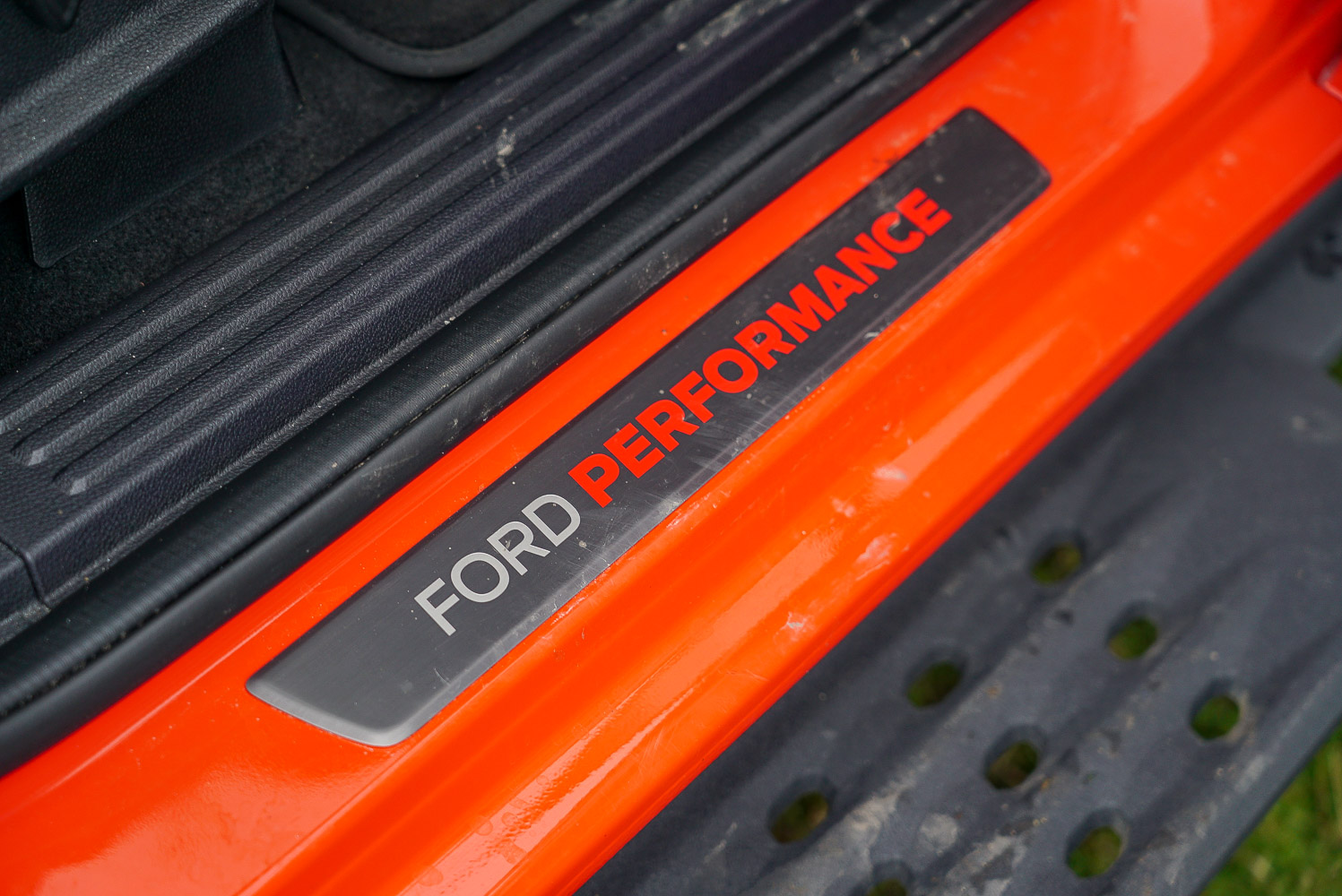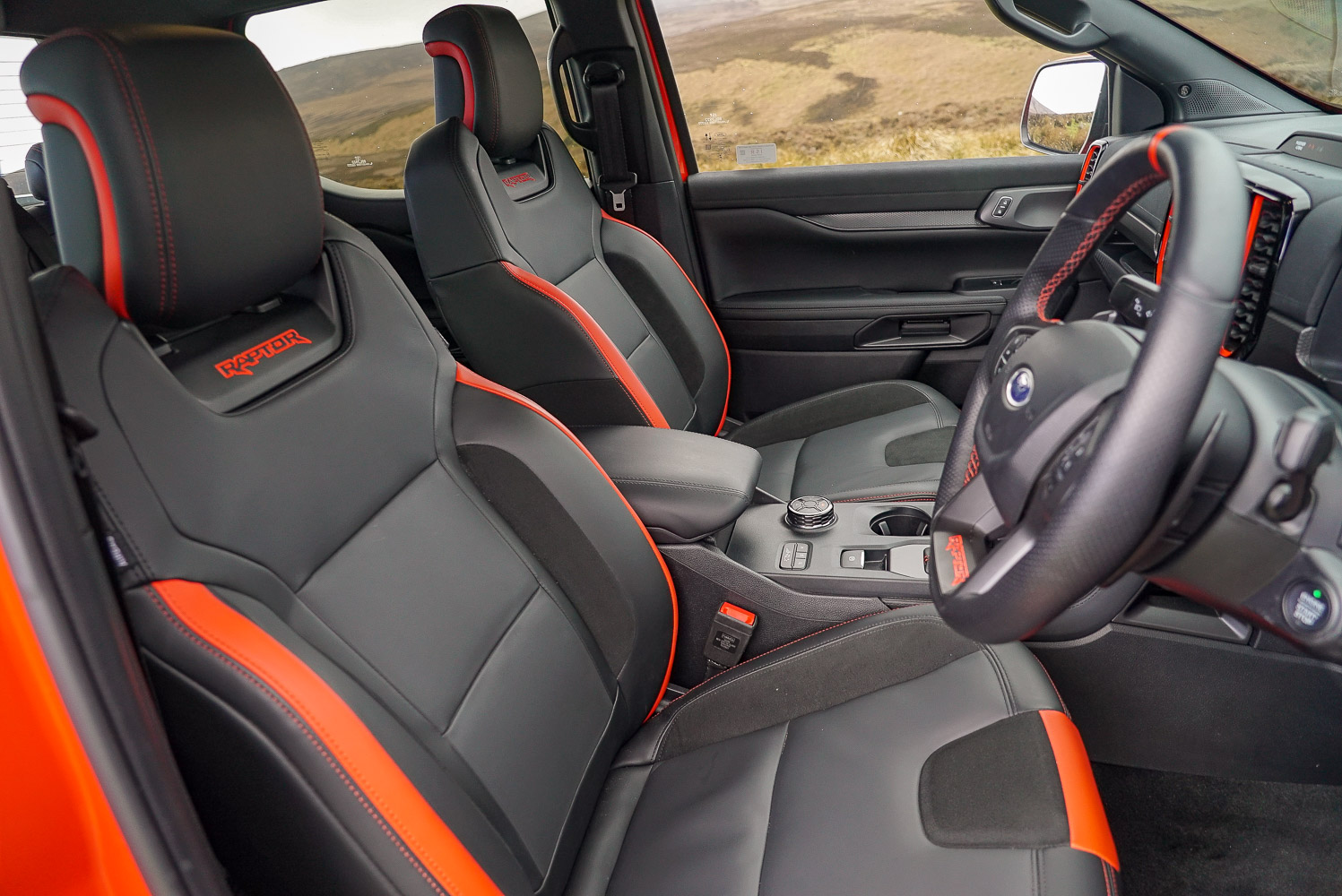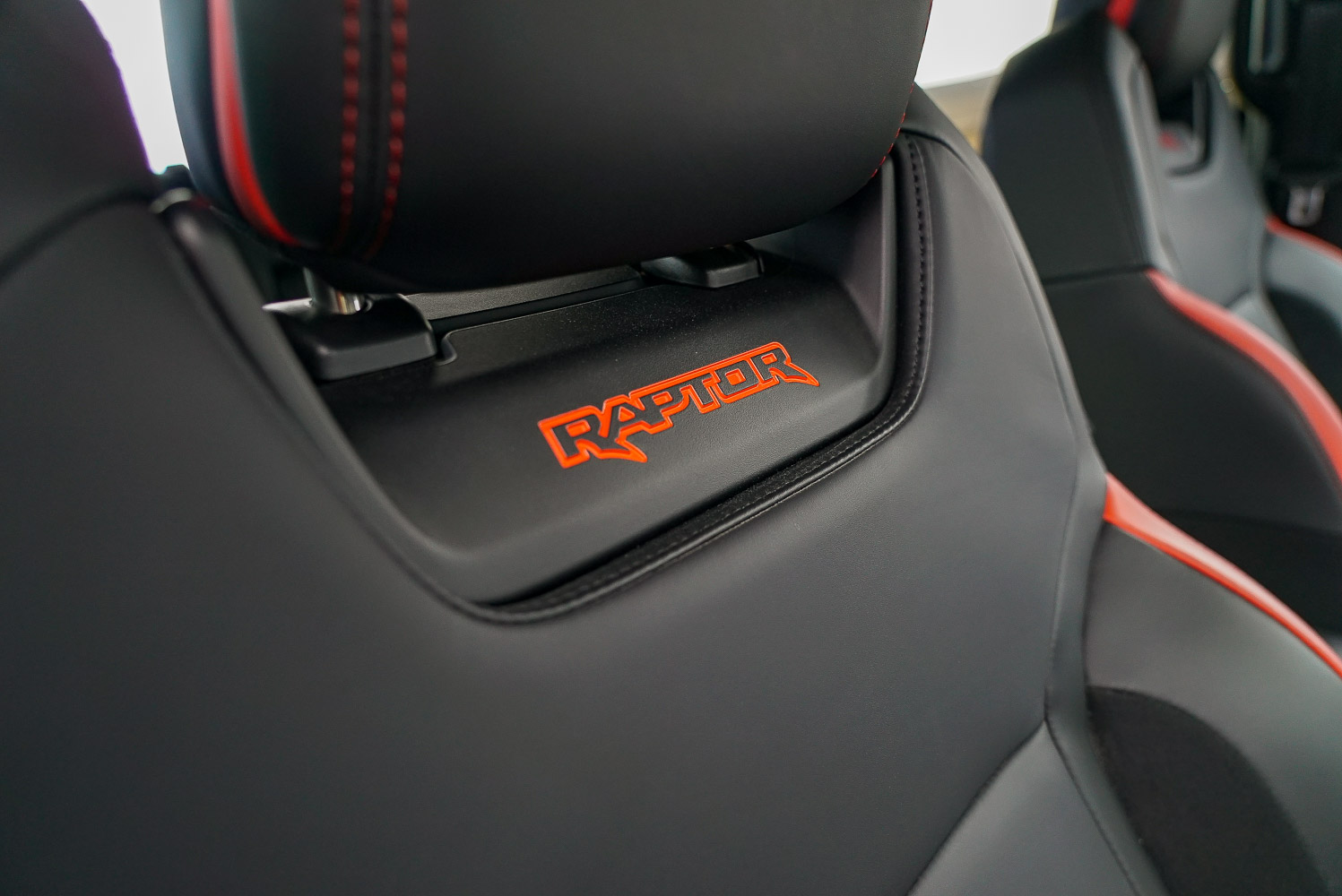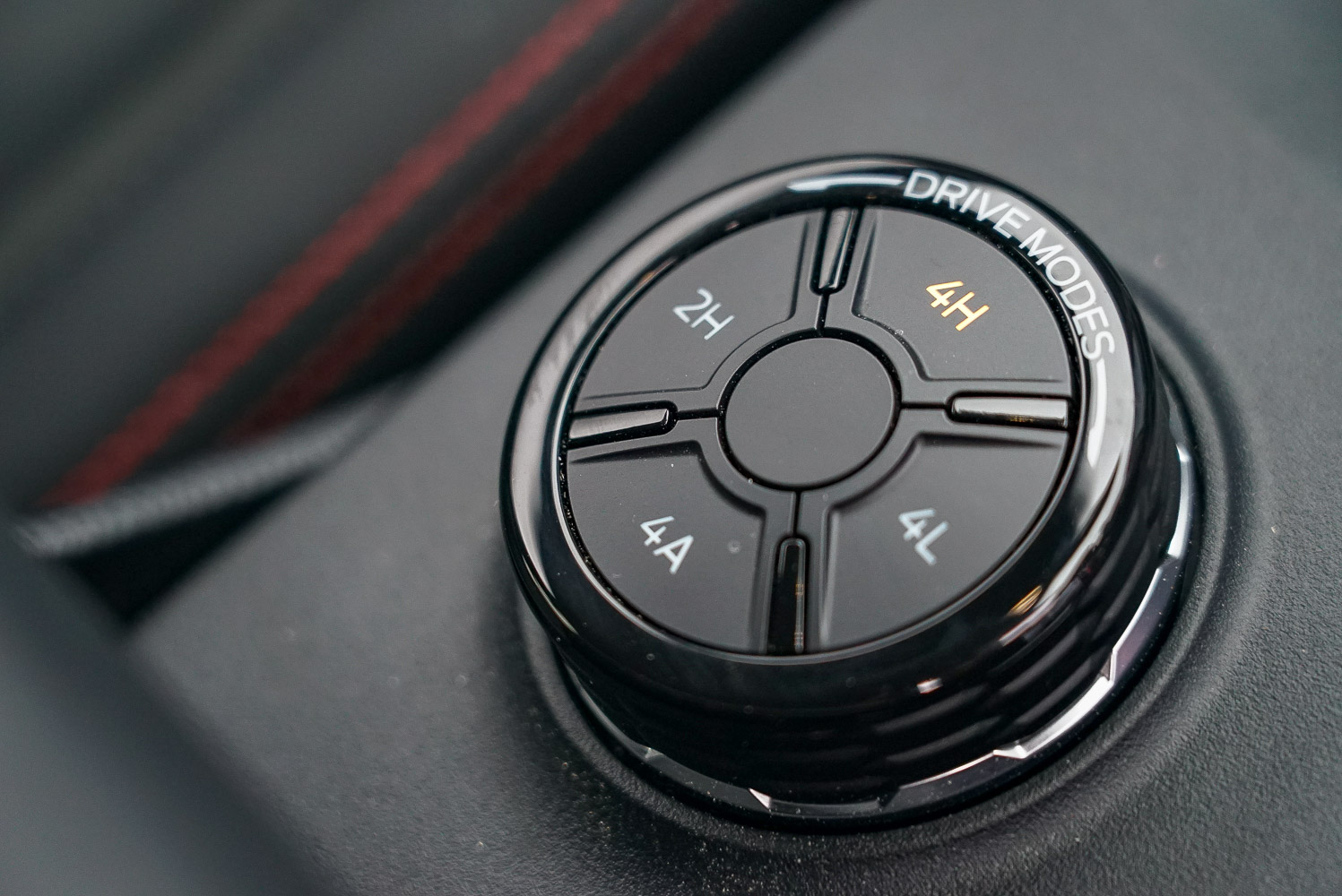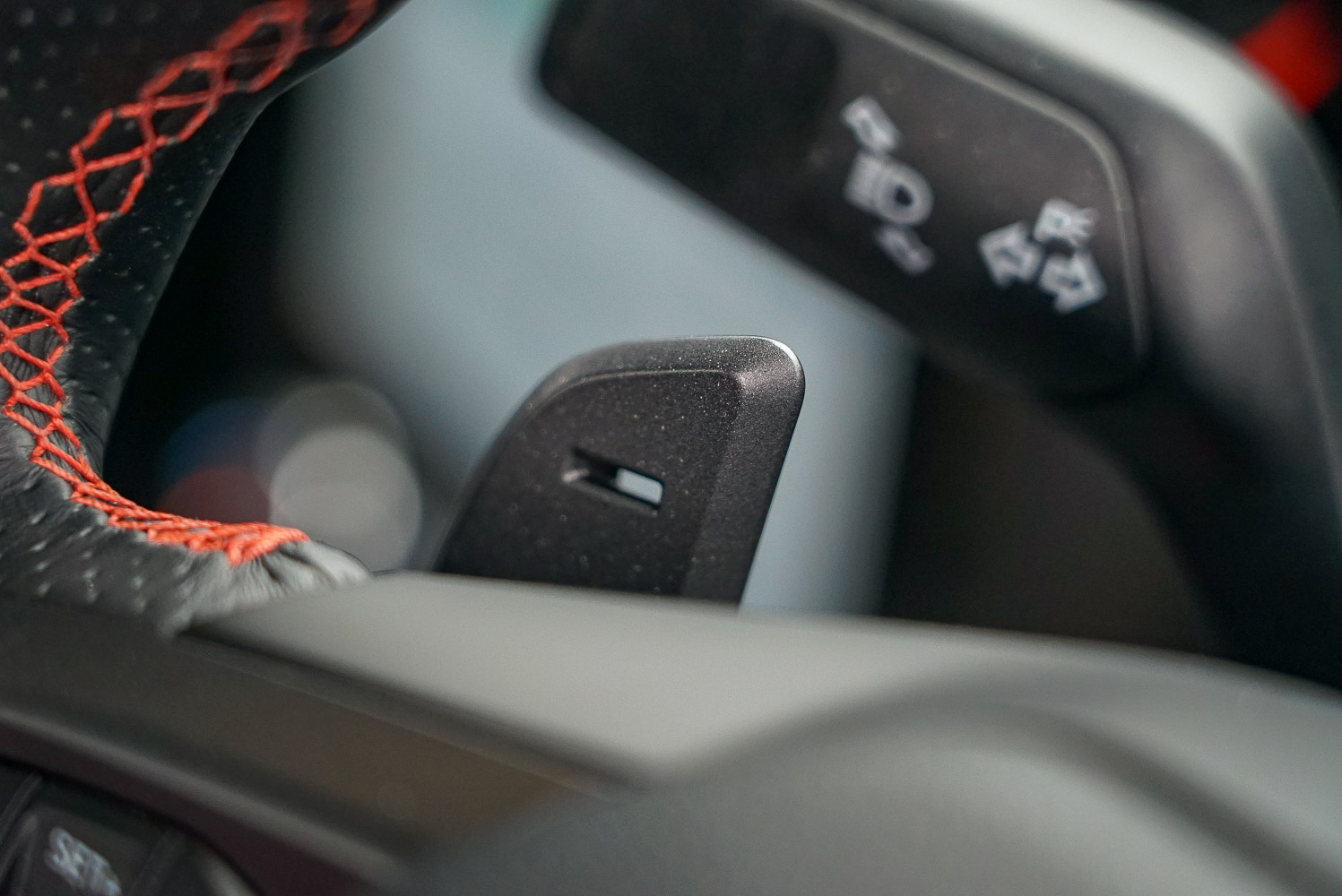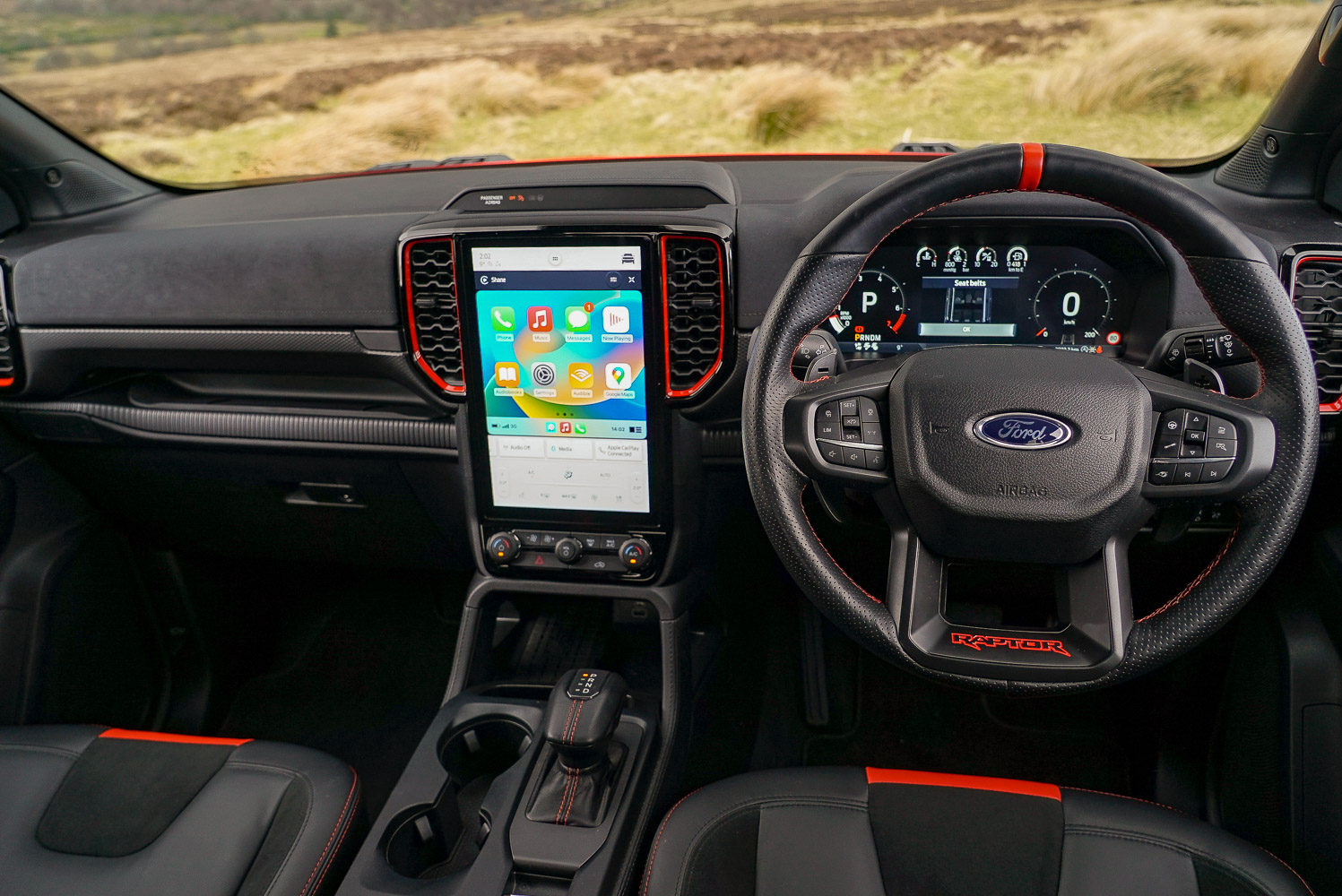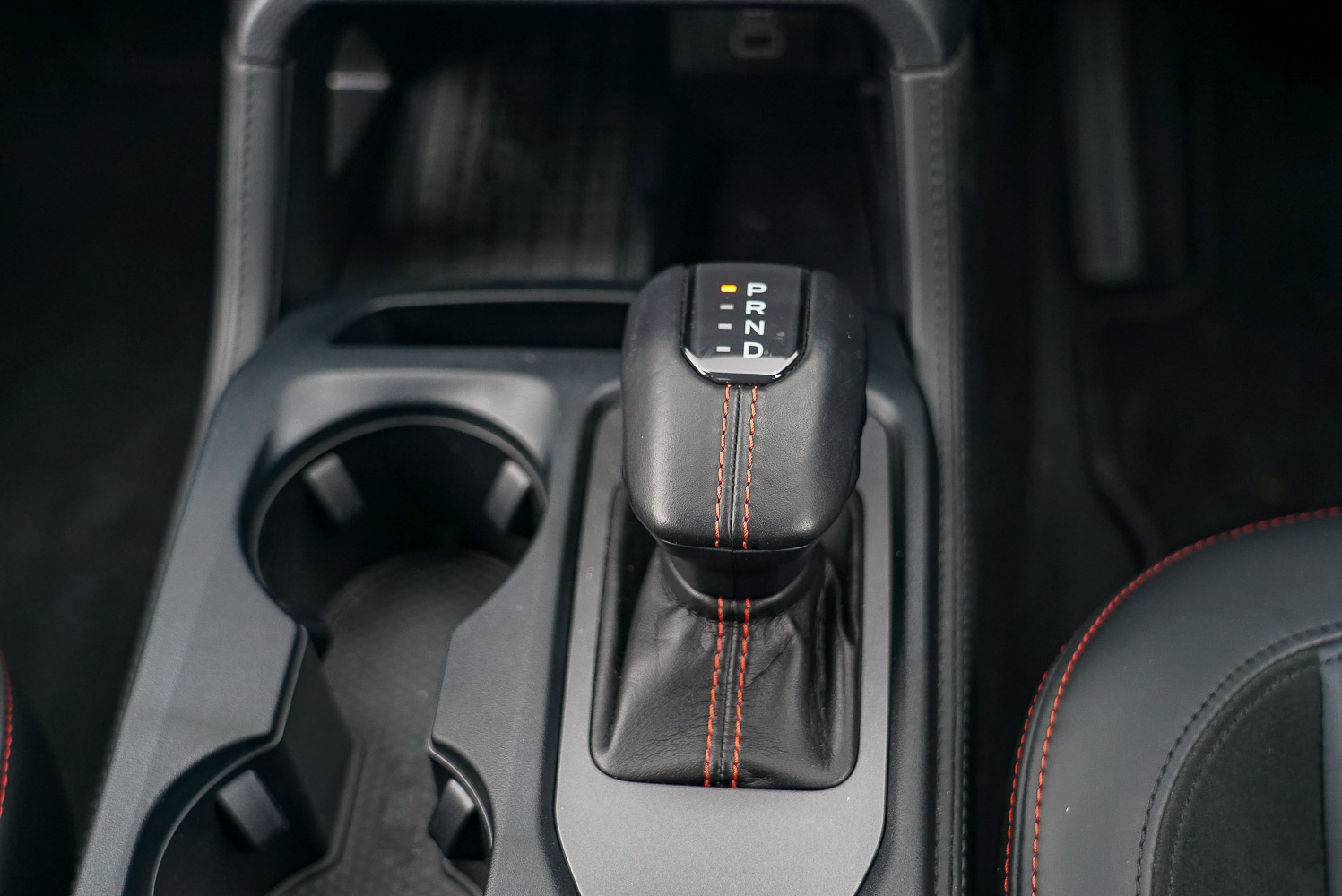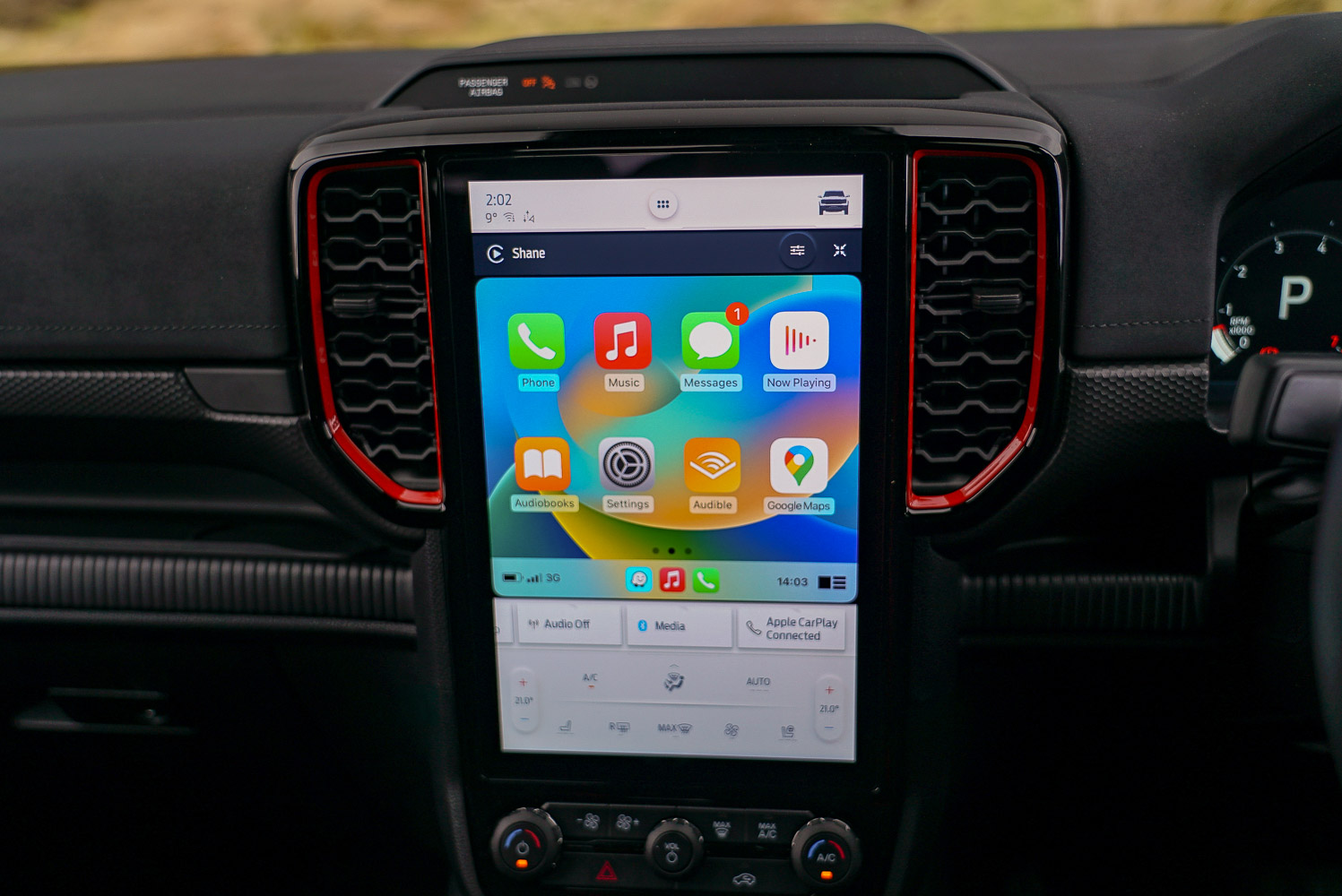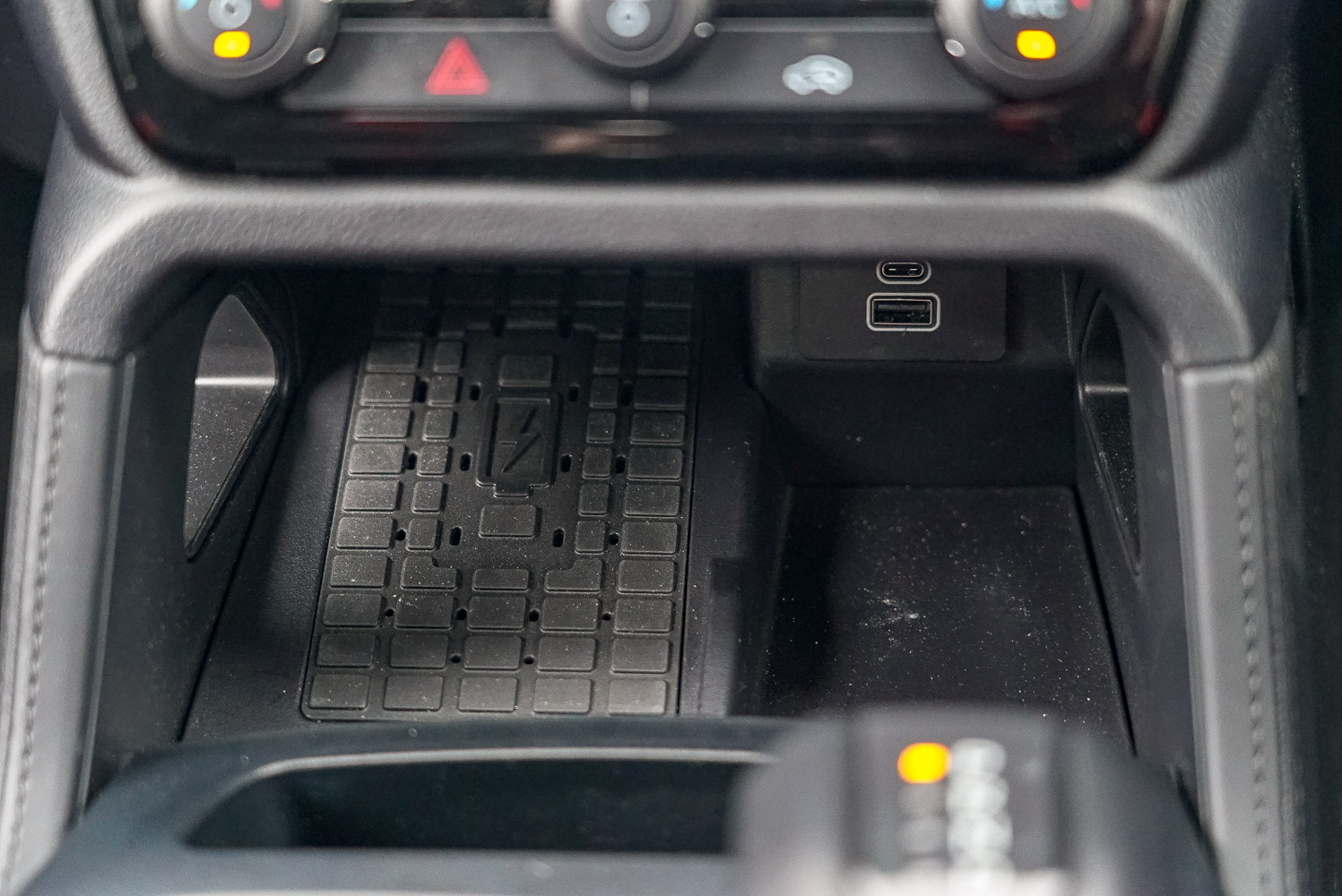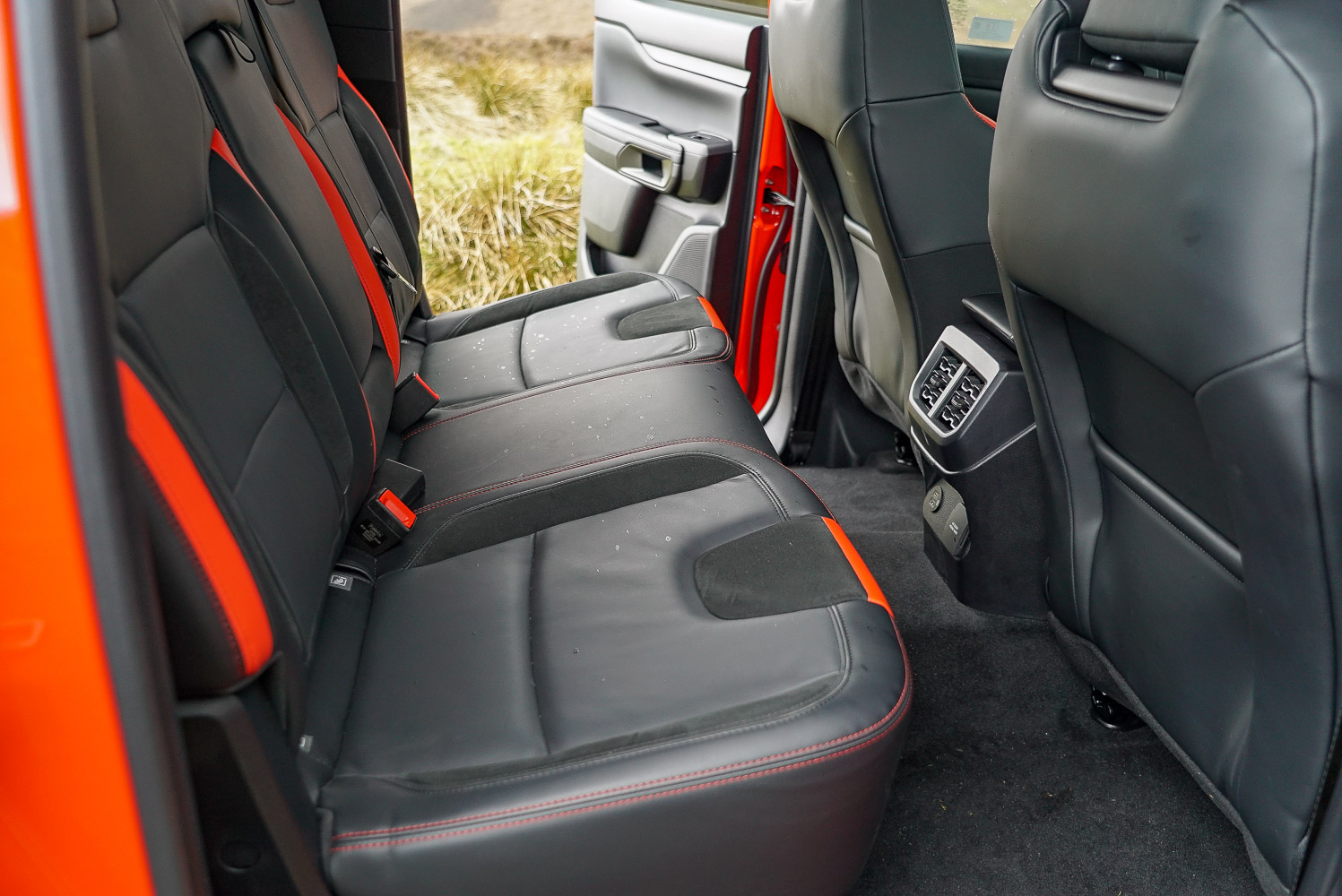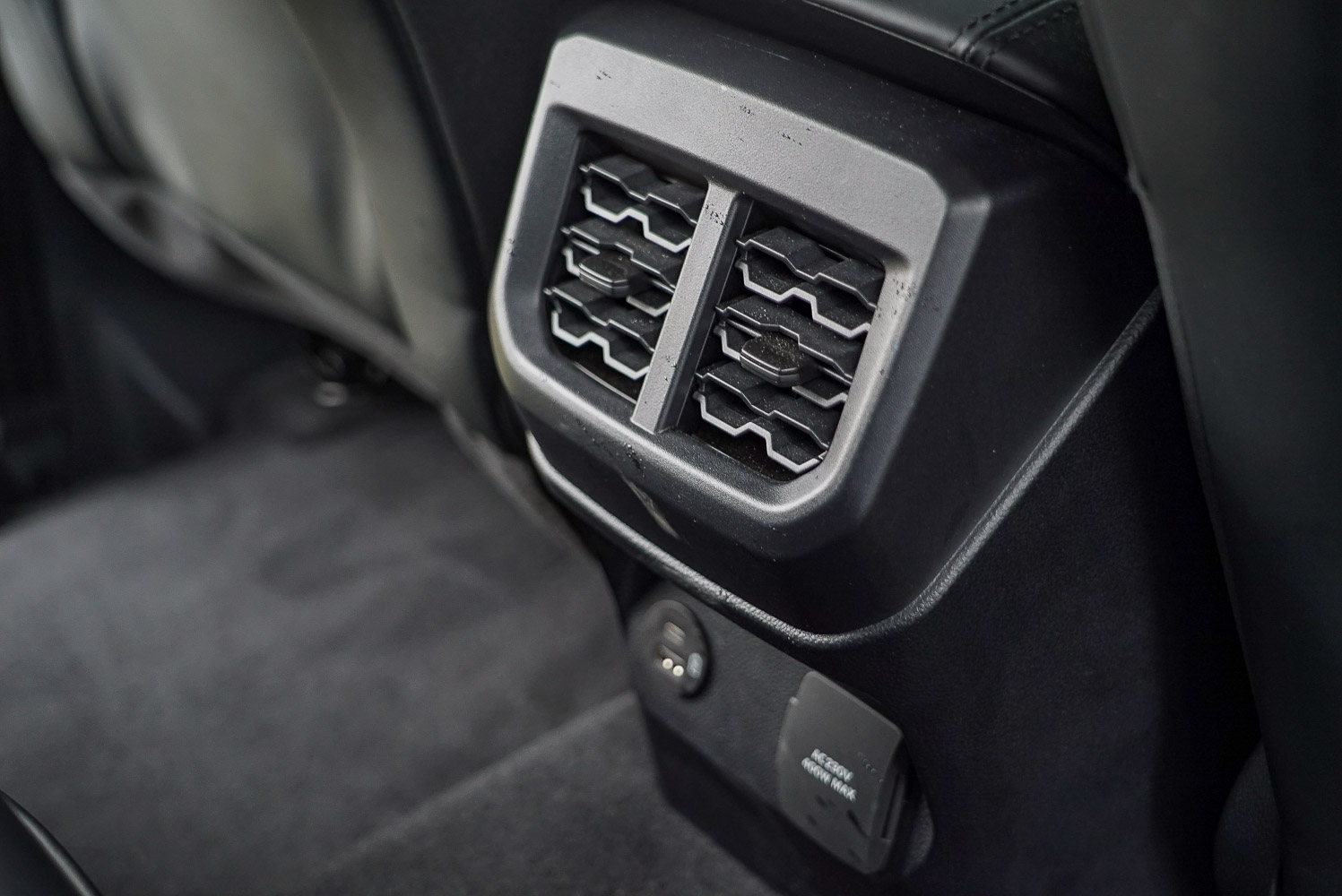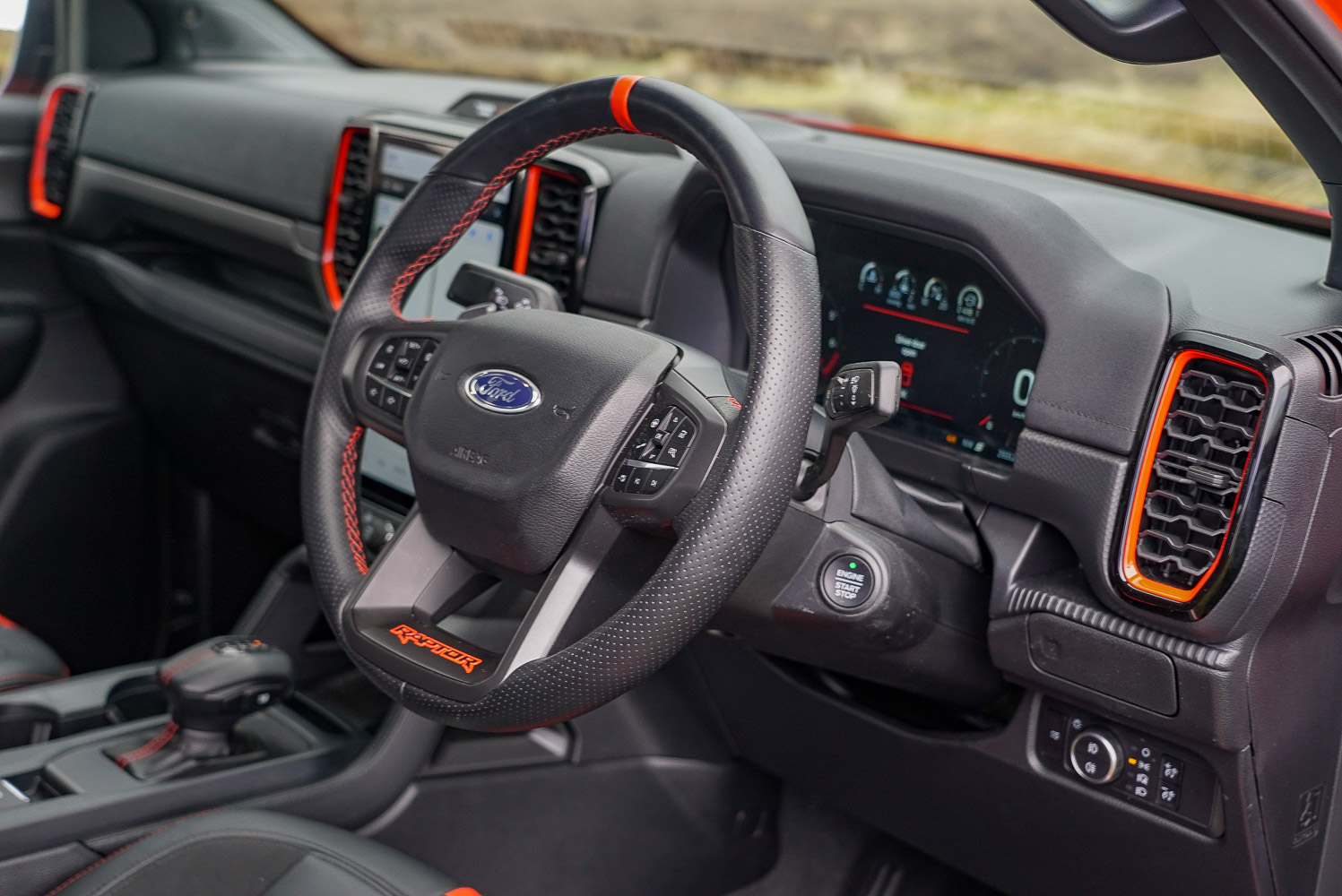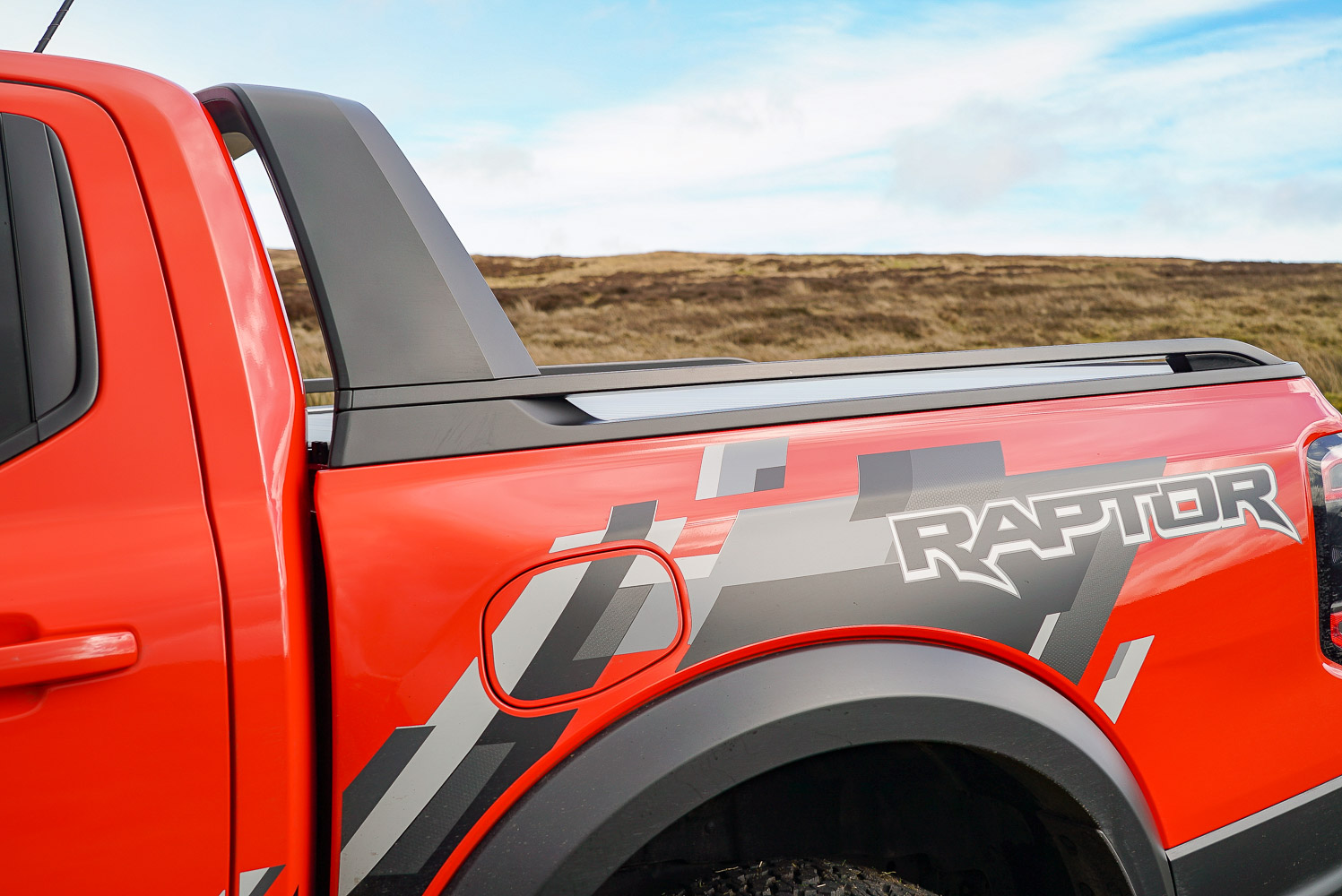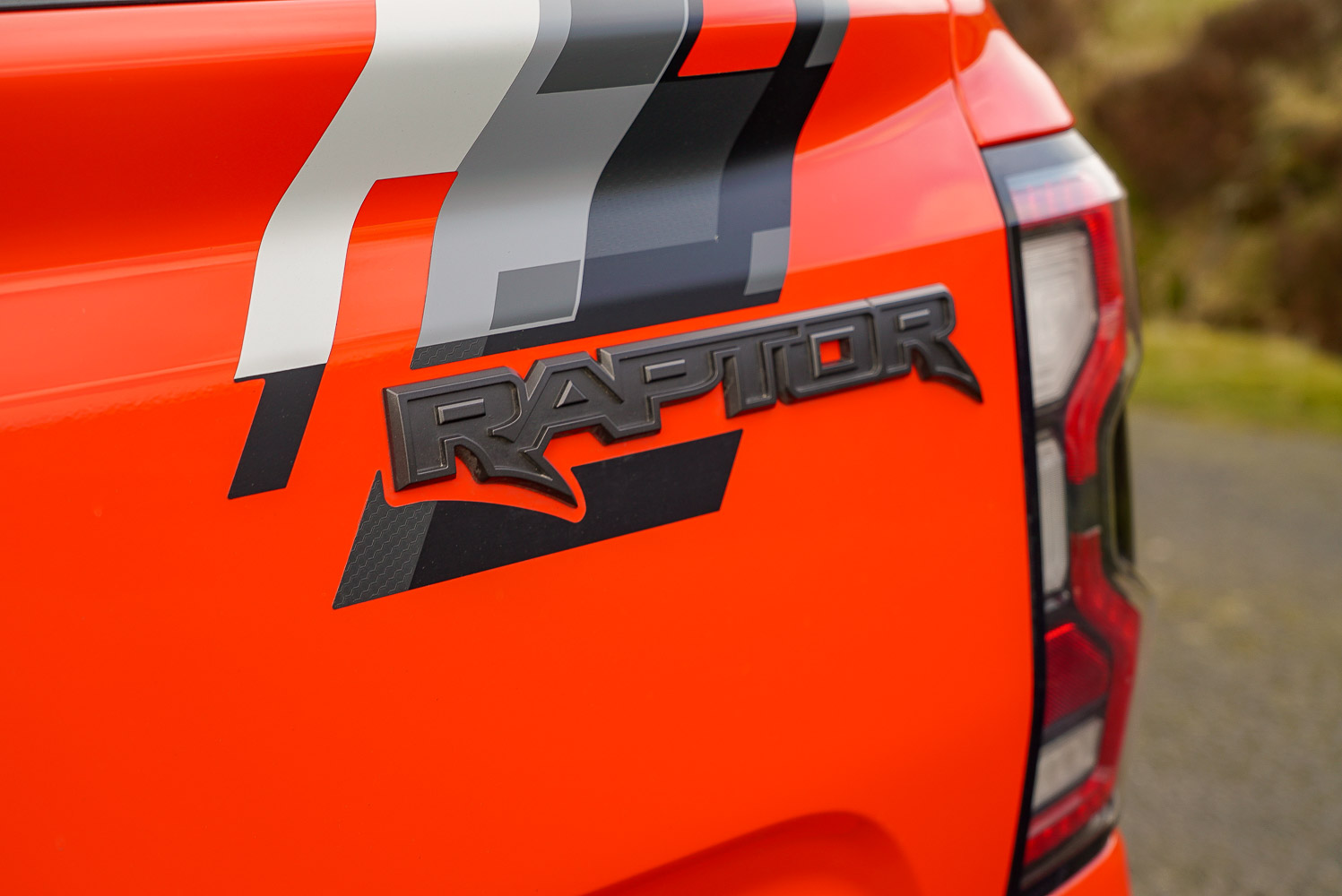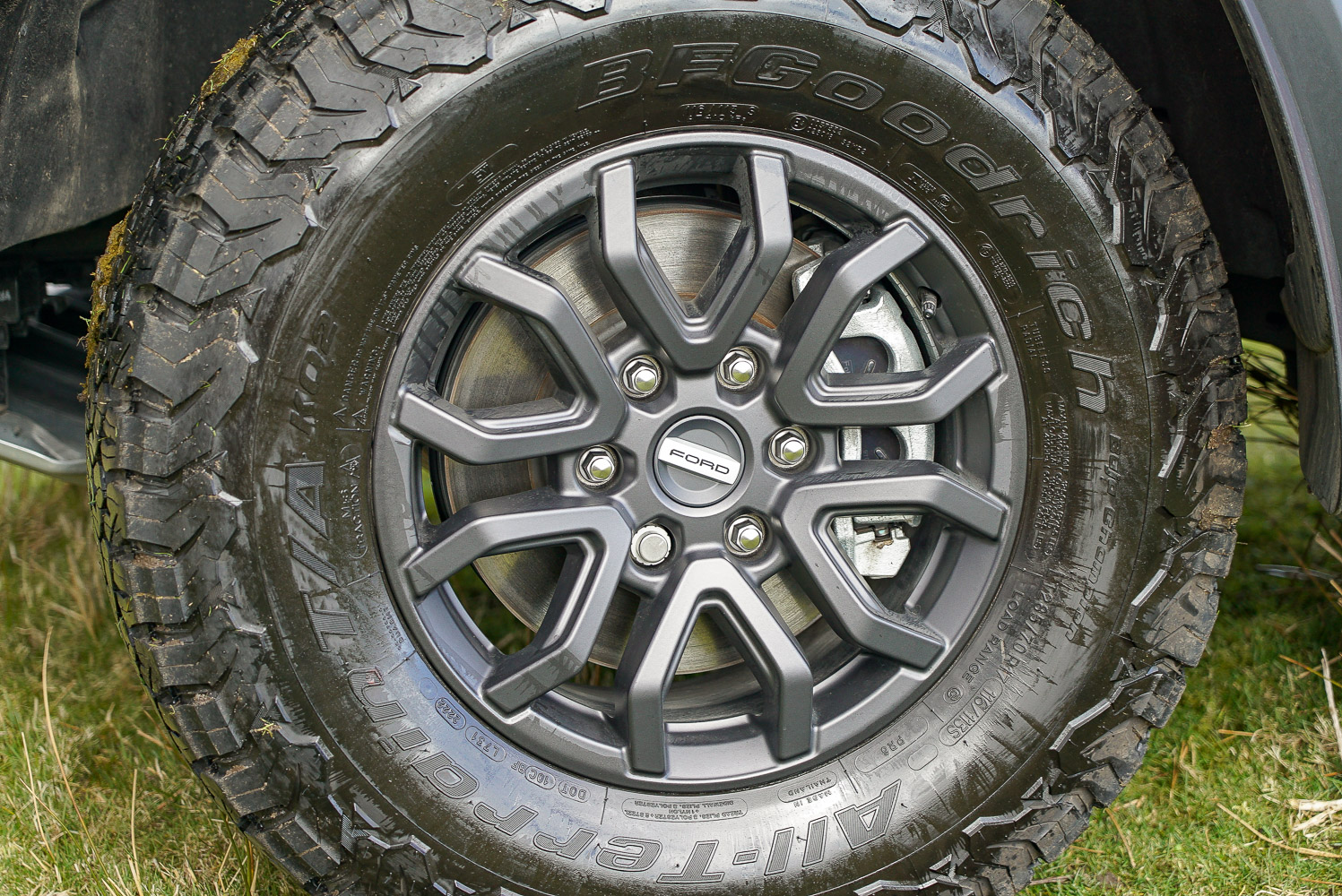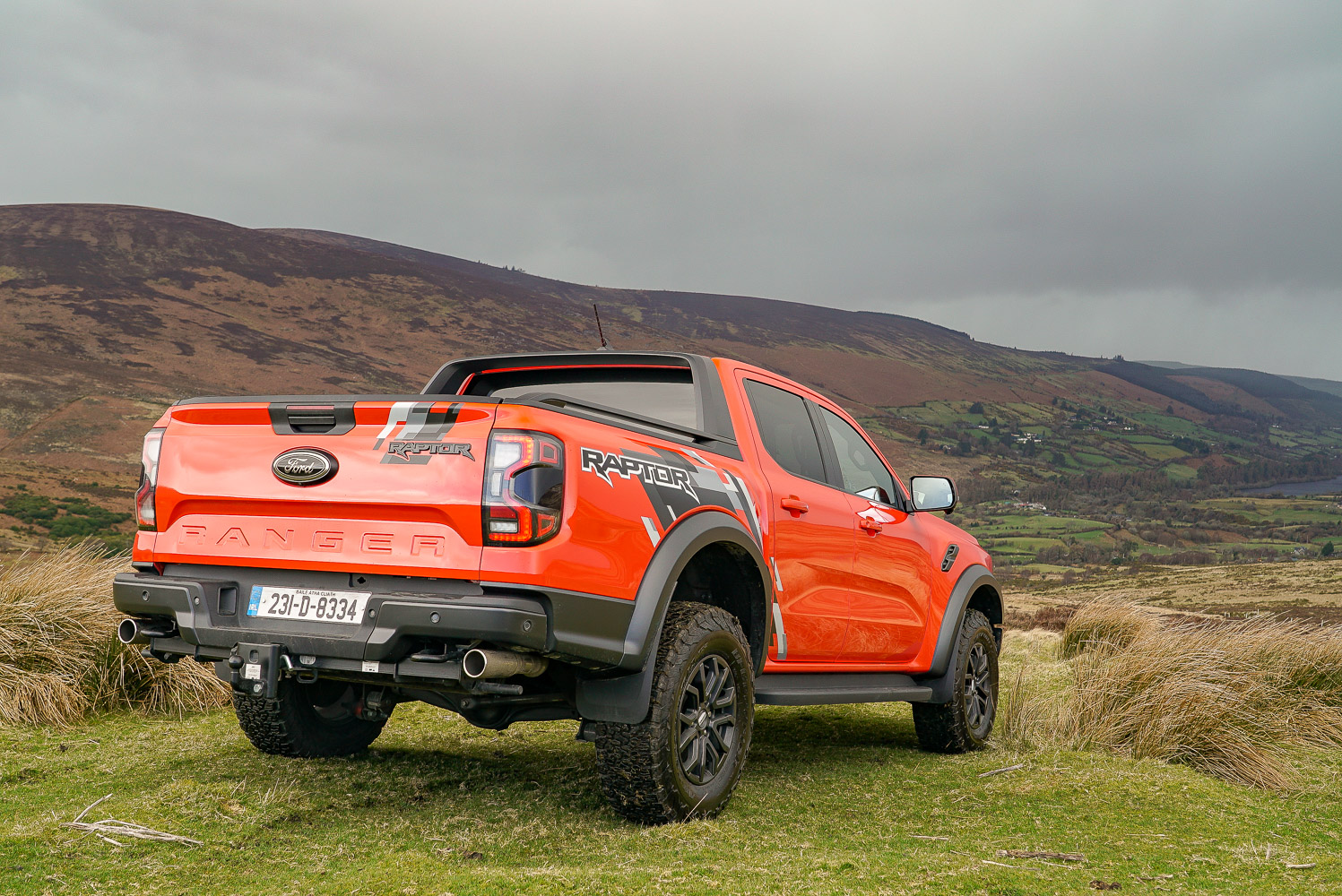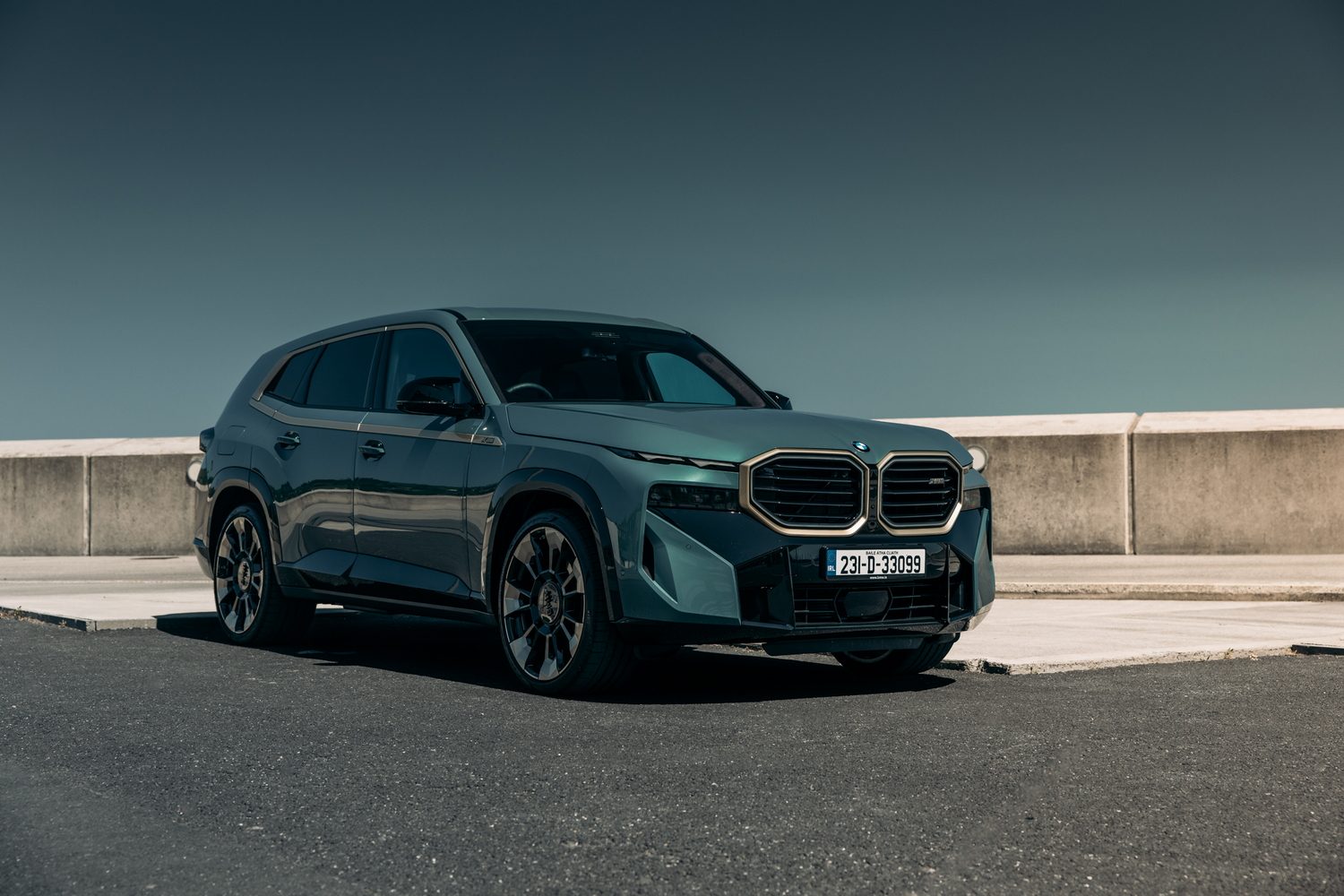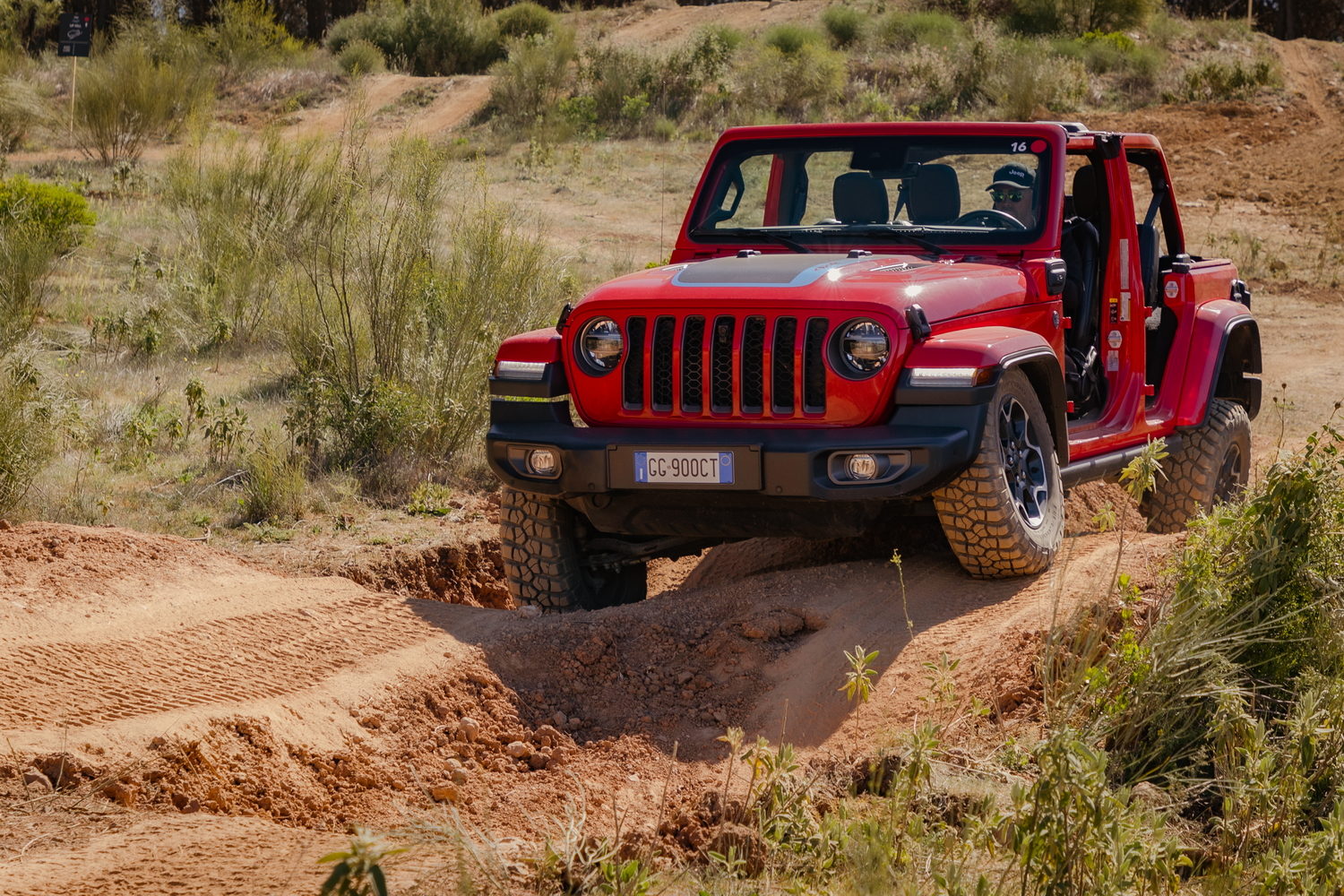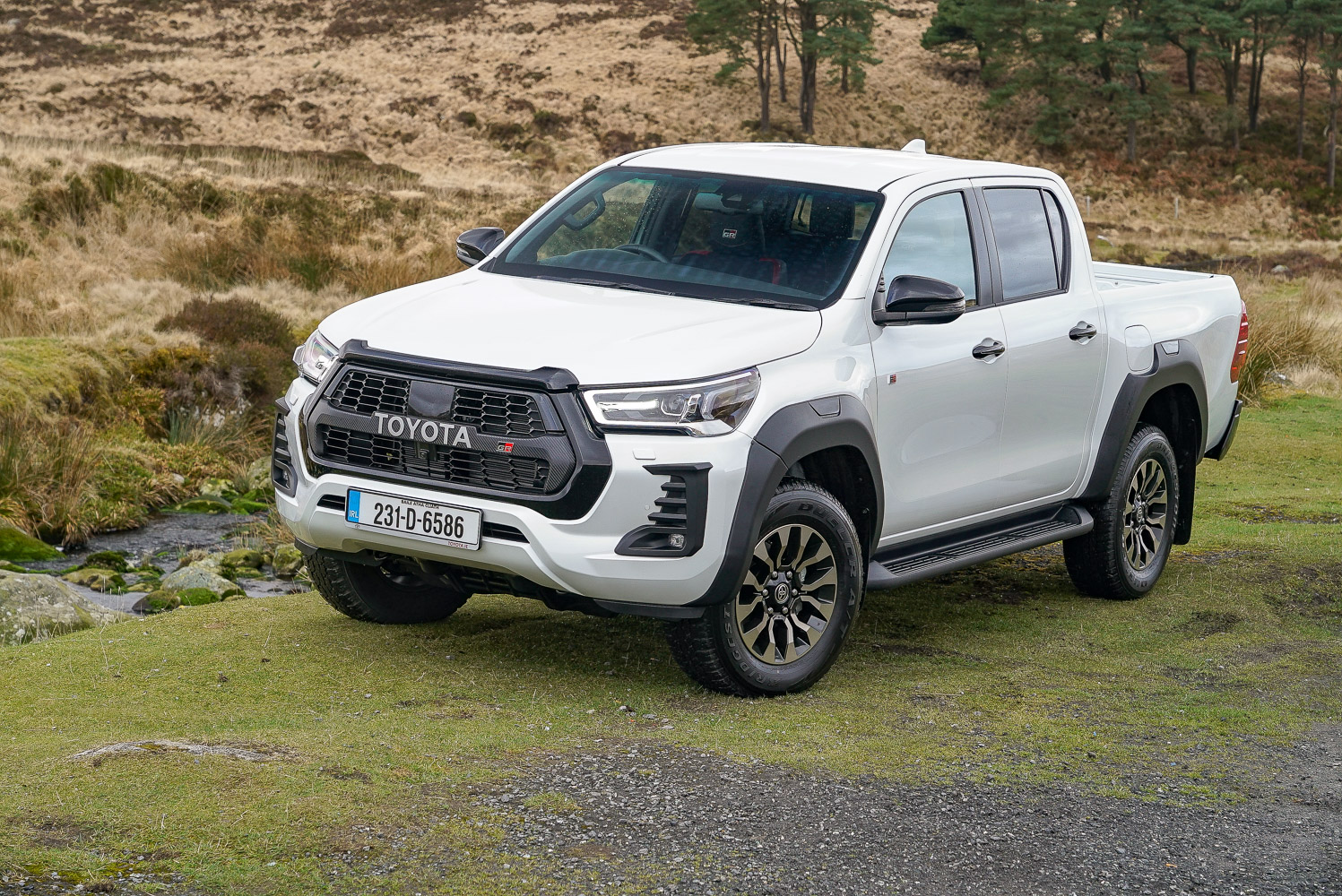Ford Ranger Raptor overview
The previous Ranger Raptor was a curious mix of transatlantic sensibilities. While the Raptor badge, the chassis tuning and the Fox-damper-equipped suspension gave Ford's pickup astonishing off-road performance and no little on-road poise, the diesel engine (no more powerful than that of the standard Ranger) and just-about-socially-acceptable size and bulk kept it anchored somewhere near the shores of common sense.
This new Ranger Raptor kind of throws all that out. Gone is the European-friendly styling of the old Ranger Raptor, and in comes a cliff-faced front end, bookended by vast C-shaped daytime running lights, which couldn't look more American if it was played by Chris Evans in full Captain America costume. Our test car was also bright orange, and had jazzy stick-on graphics down the sides, just in case you missed the point.
It also wears 17-inch alloy wheels, which sound small but then they're wrapped in high-profile, chunky-treaded off-road tyres which nicely fill up the vast, open spaces inside the wheelarches. Well, the space that isn't already taken up with that heavy-duty suspension, which once again features trick dampers designed by off-road-racing specialists Fox. Those basically mean that you can repeatedly launch your Raptor from suitable off-road yumps, and guarantee a soft landing, every time.
Clearly, the Ranger Raptor is a truck that didn't get the memo about being more caring, sharing and climate-change appropriate. Can it prove itself a relevant and entertaining vehicle in Irish conditions, though?
The Ford Ranger model range
The Raptor is, of course, the high-performance spearhead of a whole range of hard-working commercial pickups. The Ranger line-up starts with a chassis-cab XL model, priced at €41,097 including VAT. Or you can have single-cab XL, with a load-bed and a tailgate, for €41,589. There's also a four-door double-cab XL for €47,630. Standard equipment for XL models includes non-body colour bumpers, powered door mirrors, daytime running lights, automatic high-beam headlights, a part-digital instrument panel, a ten-inch multimedia touchscreen, sixteen-inch steel wheels and a rear-view camera. The only engine option at this point is a 170hp 2.0-litre EcoBlue turbodiesel, with a six-speed manual gearbox.
Next up in the range is the XLT double-cab, which also comes with the 170hp diesel and which costs from €49,868. Equipment includes body colour bumpers, a 'terrain pack' which basically means selectable driving modes, 16-inch alloy wheels and a powered lock for the tailgate.
For €56,163 you could have the off-road focused Tremor double-cab. This gets a 205hp version of the 2.0 diesel engine and comes as standard with a ten-speed automatic gearbox. Standard equipment includes a cargo bed light, a roll-over bar, body-colour bumpers, underbody protection, uprated off-road suspension, a locking differential for the rear axle, 17-inch alloy wheels, a more advanced driving modes Terrain Pack and an electronic driver assistance package.
Next up is the Ranger Wildtrak, which can be had with the 205hp engine for €60,639 or which can be upgraded to a 240hp V6 turbodiesel for €68,612, both with the ten-speed automatic as standard. Equipment now includes power-fold mirrors, an accent-colour grille, roof rails, dual-zone air conditioning, a 12-inch touchscreen, heated front seats with eight-way power adjustment for the driver, a sports leather steering wheel, an upgraded stereo, 'soft ride' suspension, front and rear brake discs (lesser models have rear drums), lane change warning and aid, intelligent speed assistance, front parking sensors, blind-spot detection, 18-inch alloy wheels, 360-degree exterior lighting, and keyless entry and ignition.
There's also a €63,856 Wildtrak X, which comes only with the 205hp diesel engine, and which includes larger wheelarch flares, a honeycomb radiator grille, bonnet graphics and off-road suspension.
The range-topper for the standard Ranger line-up is the Platinum model, which costs €71,970 and only comes with the 240hp V6 turbodiesel. Standard equipment includes a soft-close tailgate, Matrix LED headlights, front fog lamps, heated washer jets, heated and ventilated front seats with ten-way power adjustment, a 360-degree exterior camera system, a Bang and Olufsen stereo, ambient cabin lighting, automated parking, wireless phone charging and 18-inch alloy wheels.
Finally, there's the Raptor. For €74,138 you can actually have the Raptor with the 205hp diesel engine, but our 3.0-litre V6 petrol test car has a list price of €77,355. For that you get a bulging body kit with side-steps and an electric shutter for the load bed, rain sensing wipers, rear privacy glass, electric windscreen defroster, full digital instruments, heated steering wheel, tweaked high-performance suspension, an adjustable sports exhaust and underbody protection for the fuel tank.
In safety terms, the Ranger performs extremely well, more so when you remember that many commercial vehicles don't usually do well in the Euro NCAP crash tests. The Ranger gets a full five stars, with an 84 per cent adult occupant protection rating, 90 per cent for child occupant rating, and a 74 per cent rating for vulnerable road user protection which would you simply not think possible for something so big, heavy and upright as this.
The Ford Ranger Raptor interior
Perhaps it's not a surprise that the Ranger Raptor's cabin mixes the luxurious (as befitting its inflated price tag) with the hard-wearing (appropriate, given its origins as a commercial vehicle).
In tech terms, the Raptor is very well set up. There's a big digital instrument panel in front of the driver, providing clear, straightforward information and is easy to adjust to your taste. It also provides some rather entertaining animation as you switch from one driving mode to the next. In the centre of the dash, the 12-inch touchscreen, oriented upright in portrait style, is an absolute joy to use. It gets the same software as the larger 15-inch screen in the Ford Mustang Mach-E and it's simple, logical and responsive. If only all in-car touchscreens could be this good.
It probably helps that the Raptor gets separate, physical heating and air conditioning controls. If we're nit-picking, then the rotary controllers for the temperature and fan speed are a touch small, but they're simple to use so that's good.
Below that panel there's a large semi-covered storage area in which you'll find a wireless phone charging pad and a pair of USB sockets, one each of Type A and Type C. Behind this, on the centre console, is a chunky gear shifter which is slightly confusing to use at first - there's a large button on the side which you'd think is the lock release, but actually it's the button that activates the manual gear shifting for the ten-speed automatic gearbox, which can be done using the pair of paddles behind the chunky four-spoke steering wheel. The lock release button is the small switch on the front of the shifter, which I remembered about 20 per cent of the time...
Next to that is a pair of large cupholders, and the rotary controller that lets you choose between driving modes. These vary from Normal to Sport to Slippery for on-road driving, and another four for off-roading. These are Rock Crawl, Sand, Mud/Ruts and a final mode called Baja - named for Ford's multiple wins in the gruelling Baja 1000 off-road race down near the Mexican border with California, and it basically turns all of the settings up to 11 for maximum off-road speed and performance. There are also push-buttons which allow you to select, on the fly even at motorway speeds, between four-wheel drive and rear-wheel drive, and high and low ratio gears for off-roading.
Behind this is a large storage box under the front seat armrest. Speaking of the front seats, they're brilliant - proper American spec armchairs, but with just enough support that you don't slide out of them when cornering enthusiastically.
Overall quality seems quite good. There are lots of cheap-looking and cheap-feeling plastic components, but the way the Ranger Raptor's cabin is bolted together seems just fine. Just as well considering how you can drive it off-road.
In the back, things are slightly less impressive. The rear seat is wide enough and well-shaped enough to allow three people to sit back there in reasonable comfort, assuming the person in the middle seat is at least reasonably slim hipped, but legroom isn't great. That's rather disappointing for a car that's well over five metres long.
Of course, much of that length is given over to the load bed. In the Raptor, it comes with a black protective coating, and all the tie-down points you could ask for. Our test car also came with an electrically retracting blind-style load cover, which could be opened and closed by pressing a button on the key fob, which is very handy. Less handy is the Raptor's maximum payload. The load bed is massive enough for you to be able to load up pretty much anything you can lift up to the tailgate, but while the standard Ranger is rated to carry more than one tonne of payload, the Raptor - thanks to its various sporting add-ons - can only manage 652kg.
The Ford Ranger Raptor driving experience
Fire up the Raptor's 3.0-litre, 292hp engine and it sounds pretty good. Not the deep, bass-rich beat of a V8, true, but the V6 manages a decent growl, especially if you remember to press the little button on the steering wheel that opens up the valves in the sports exhaust to let a little more noise out.
The ten-speed gearbox slips easily through its cogs, and so combined with the cognitive-dissonance-inducing lack of diesel clatter, the Raptor slips pretty smoothly away. Well, smoothly that is until you find a bump or two. In spite of those remarkable Fox dampers and all that suspension travel, the Raptor has a very fidgety, unsettled ride quality. It never gets really bad, and indeed at higher speeds on the open road it's quite brilliant at dealing with bigger undulation and road movements, but at low speeds and around town it just constantly jiggles, which can get tiring. Possibly some more road-biased tyres might dial a little of that out.
At low efforts, the Raptor feels very American in that it just kind of loafs around with little effort demanded from you. The engine churns away pretty quietly and, in spite of the gargantuan size and the endless bonnet, the smooth, accurate steering gives you a good bit of confidence to place the Raptor on the road. It's not the most manoeuvrable vehicle in town, of course, but it's not quite as bad as you'd think thanks to the all-round camera system. The looks of intense hatred from passing pedestrians are quite another matter...
Up the effort and the Raptor... doesn't reward all that much. The shift to petrol power hasn't gone well, as this V6 turbo just lacks the torque to shift the Raptor's bulk with any conviction. For the first tenth of a second or so, it feels brisk off the line, but then the weight takes over and you're just left sitting and waiting, through the rather tardy 7.9-second 0-100km/h run. Maximum outputs of 292hp and 491Nm are just not enough to make the Raptor feel sufficiently venomous ('scuse me for mixing my animal metaphors, there) so it ultimately feels disappointing. I wonder would the diesel version, with its higher torque output, feel more satisfying to drive? It's a question we'll attempt to answer when we get a chance.
Of course, the true joy of driving the Ranger Raptor is when you get it off-road. There, the engine's lack of oomph matters less because any speed above walking pace feels fast when you're on grass, mud or dirt. The magic happens when you find some kind of an incline over which you can ramp the Raptor's wheels off the ground, and feel the incredible control of those Fox dampers as you come back down to Earth. What you think will feel like a controlled crash feels more like falling into bed. It's truly remarkable.
Sadly, that's not really carried through to on-road driving. Again, the Raptor's weight and bulk count against it, meaning you can't exploit the chassis' inherently good balance because as soon as you try to, you're either crossing the white line or brushing a wing mirror through a hedge. There's surprisingly little body lean in fast corners, and what there is is well controlled, but you'd be hard-pressed to describe the Raptor as fun. It's just too big for our roads, so if you're going to buy one, I hope you have some spacious tracts of land out the back.
Actually, the Raptor is possibly best as a long-haul cruiser. The suspension does settle down nicely on the motorway, and the combo of those seats, the smooth-shifting gearbox and the V6 engine's decent refinement make long journeys just fly by. The only problem, at this point, is the engine's massive thirst. Ford quotes 13.8 litres per 100km, but we averaged 16 litres per 100km.
Our verdict on the Ford Ranger Raptor
I think the problem with the Ranger Raptor is that the previous generation was just on the edge of being too big and too unwieldy for Irish conditions, and the increase in the new model's dimensions have pushed it over that edge. It's too much truck for our roads, but conversely one with not enough engine. It is, in the right circumstances (off road and with plenty of space to play) hilariously good fun, and it's smoother and more refined at a cruise than you might expect. As a daily driver, though? No thanks.
What do the rest of the team think?
While everything that Neil said is true, the only thing that really matters to this truck's success is its image. Someone in the building trade recently told me that there's an unspoken pickup hierarchy in the industry and the Ranger Raptor sits head and shoulders above the others in terms of street cred. The fact it's so expensive and not actually as good a work vehicle as lesser Rangers explains why there are more Wildtraks on the road, but rest assured: the Raptor is the one most pickup drivers aspire to. For the record, I enjoyed my time in it and found it a bit of a giggle, but it's even less suited to Irish roads than the previous model.
Shane O' Donoghue - Editor

